- Automobiles
- Watches & Jewelry
- Art & Collectibles
- Wine & Spirits
- Destinations
- Resorts & Spas
- Jetset’s Top 5
- Real Estate
- Cover Features
- Entertainment

- 2024 NBAA Business Aviation Convention & Exhibition (NBAA-BACE)
- Love at First Sight
- The Fine Art of Carchitecture
- Investing in Fine Wines

Fincantier’s Fortissimo Superyacht
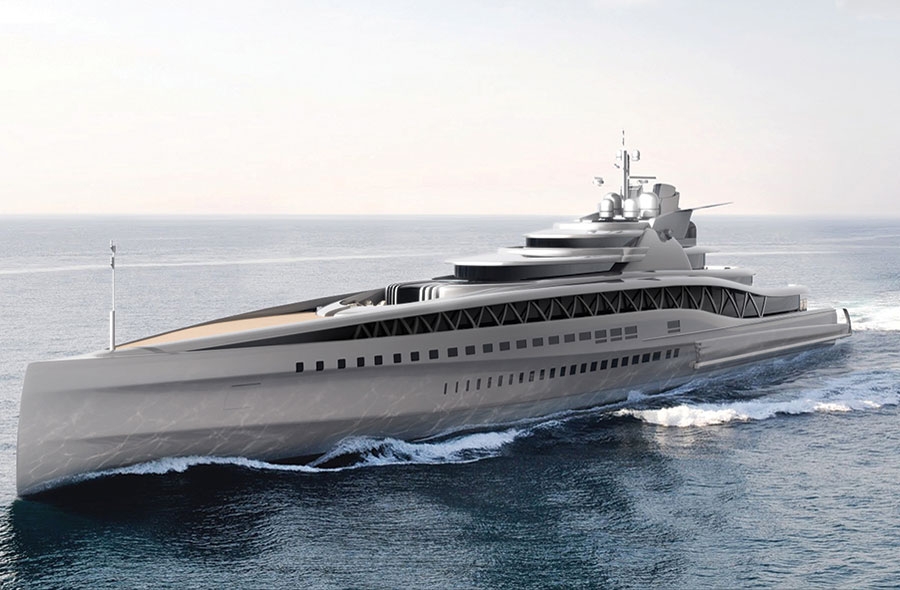
It’s the kind of assignment that most design teams can only dream of: Create a turbine-powered superyacht that’s not only very large, but amazing.
That’s exactly what Ken Freivokh Design and Fincantieri Yachts accomplished when they collaborated on the Fortissimo superyacht concept which measures an impressive 145 meters and is capable achieving speeds of over 35 knots.
The Fortissimo features a total of seven decks, including a sun deck, a high-visibility bridge and operational deck, a dedicated owner’s deck, a social and entertaining deck, a guest deck and a crew deck. The utility deck, which contains the galley, laundry and stores, was designed with segregated circulation routes to ensure that the crew can carry on their duties throughout the yacht discreetly and efficiently. Eight suites await the owners and their guests, and the yacht can accommodate a crew of 48. Other amenities include a see-through swimming pool and Jacuzzi and a main deck gymnasium and bar. achieving speeds of over 35 knots.
This futuristic superyacht also sports garages fore and aft to house toys and tenders, including a couple of elegant 10-meter, high-performance tenders; a limo tender; and utility, sports and rescue tenders, all launched via beam cranes from sophisticated shell doors. achieving speeds of over 35 knots.
A critical element of the Fortissimo’s design is its rigid spaceframe system which enables full panoramic views. The design concept also acknowledges the tremendous power of the turbine installation, and integrates the powerplant as an integral part of the total design. The guest deck contains an art gallery that offers views into the machine room which is a work of art in itself. achieving speeds of over 35 knots.

As Ken Freivokh notes, “. . . it is essential that the design is developed in close collaboration with a truly experienced yard, and we feel privileged that our lateral thinking proposals were creatively analyzed and brilliantly resolved by Fincantieri’s in-house engineering team.” achieving speeds of over 35 knots.
The Fortissimo is much more than luxurious — it’s a totally unique concept that would surely turn heads on any body of water.
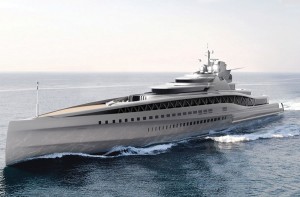

- Owners essentials
Ken Freivokh 145m yacht concept ‘Fortissimo’
Ken Freivokh Design has been selected as one of the finalists for the International Yacht & Aviation Awards 2014 with the 145m mega yacht Fortissimo concept, entering the ‘Yacht Concept Design over 30 metres’ category. Representing one of the fastest superyachts in the world, yacht Fortissimo concept design is a high performance gas turbine vessel, based on a platform developed by Fincantieri Shipyard. Fortissimo is all about effortless motion, long sightlines, the sensation of space, of speed, of purity of line, the transparency between interior and exterior, the interplay of levels, the handsome triple height atriums, the treatment of the yacht as a proper transportation machine communicating the structure and the direct relationship with the sea. The inspiration was definitely structure based – it is essentially a very large, very long yacht, very much an ocean going vessel, to be subjected to stresses which require a sound structural solution. Instead of relying on conventional internal structures, Fortissimo’s structural solution is the equivalent of a space frame structure which is much more efficient than a beam and post structure, and the hull and deck can be calculated simply as the skin of the yacht. The Fortissimo yacht concept extends to the side decks, where traditionally one would find the normal overhangs over the passageways, with the occasional styled fashion plate. Again, a more elegant solution has been found, whereby the hull and deck are treated as part of the same major structure, with what effectively is the equivalent of a Vierendeel beam linking both and adding strength as well as visual excitement. A unique feature of the Fortissimo superyacht design is the transparency between interior and exterior, the interplay of levels, the handsome triple height atriums, the treatment of the yacht as a proper transportation machine communicating the structure internally and externally, as well as a direct relationship with the sea.
Recent Posts
- Boats shows
- Uncategorized

New 88m and 145m superyacht designs from Fincantieri
By Adrian Prisca
Updated on September 1, 2017
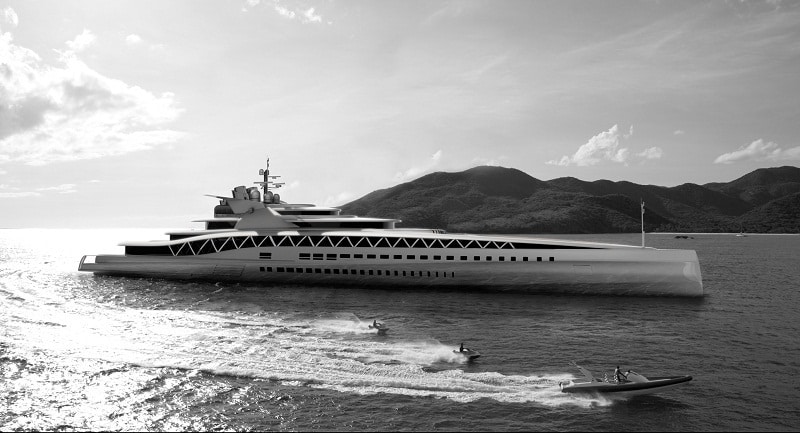
Built to highlight Fincantieri Yachts’ object of building extravagant 70-90 meter long vessels, the Virage 88 concept was presented at the recent Monaco Yacht Show. This was one of the two yacht projects presented, the other being the Fortissimo. The last one mentioned comes out of the world’s economical restraints and will simply be based on speed and luxury. With the help of the world-renowned yacht designer Ken Freivokh, the 145-meter-long 35-knot super-vessel was finalized on paper.
For the other project, the Virage 88, Andrew Winch was summoned. Having projected the “yacht of the future”, he simply drew a work of art, with soft shapes and beautiful flowing lines, a “sculpture” as he calls it. Of course, this will require the hands of the most accurate and experienced yacht builders in the world, because the level of detail will be absolutely astonishing.
They shall use their tools to create a symbol: “a relaxed and calming environment for guests to enjoy”. These designs simply look marvelous on the monitor. We’d call these two wonders “well spent money”.

[SuperYachtTimes]

About Adrian Prisca
Founder of Luxatic and countless other projects, Adrian has shaped this website into a go-to source for discerning readers looking for the latest in luxury products and experiences. He has over 15 years of experience in creating, managing and publishing lifestyle content across numerous platforms and he’s considered a leading voice in the luxury industry. Learn more about Luxatic's Editorial Process .
Leave a Comment
More from luxatic.

24 Incredible Celebrity Yachts You Will Surely Love

The 10 Longest Range Private Jets in the World in 2023
By Victor Baker
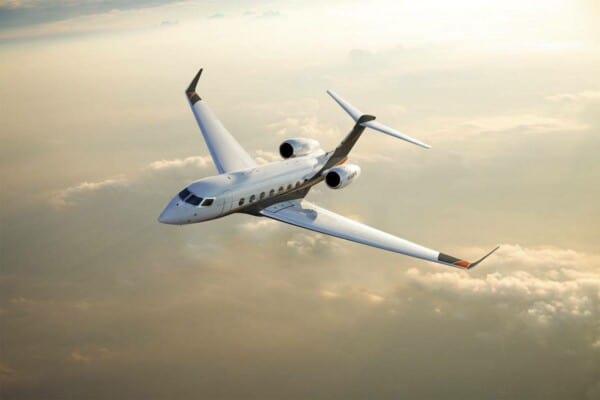
The 15 Best Small Planes That You Can Buy Right Now

The 20 Best Airlines in the World Right Now

The 15 Biggest Planes in the World
By Thom Esveld

Sailing in Style: The World’s Most Beautiful Yacht Charter Destinations
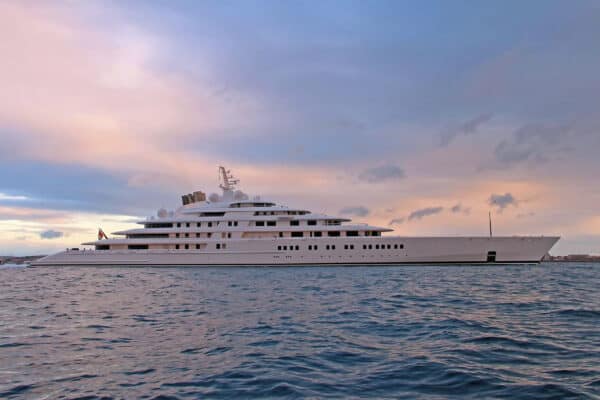
These Are The 25 Biggest Yachts in the World!

These are The 15 Fastest Planes of All Time
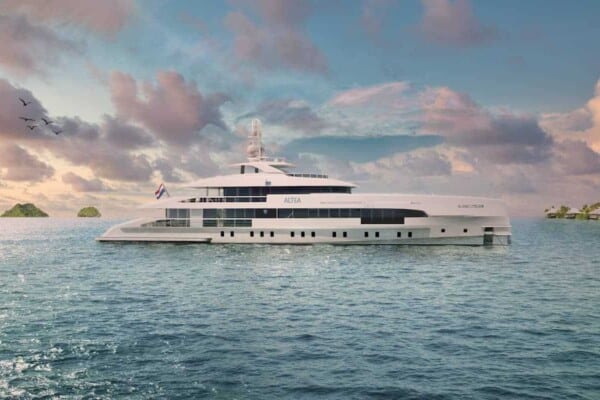
Best Luxury Yacht Brands: 25 Shipyards Which Build The Best Superyachts
By Brody Patterson

The 15 Best Personal Submarines For Superyacht Owners
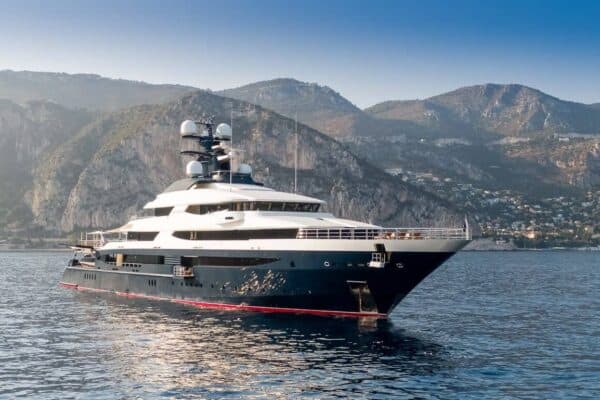
20 Largest Explorer Yachts in the World
By Alex Holmes
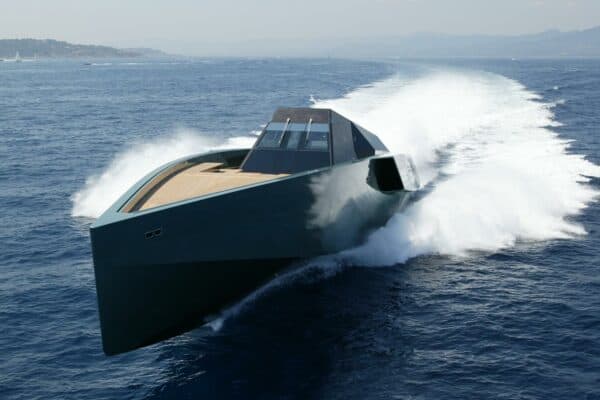
The 20 Fastest SuperYachts in the World
madal essay in nepali language
- Places To Visit
- Art & Culture
- Things To Do
- Featured Story
- International
- List of Airports in Nepal 2023
- List of 3, 4 and 5 Stars Hotels in Nepal

The Madal: Nepal’s Musical Heartbeat
Hiding away in the Himalayan foothills is a rich musical heritage, with the madal—a double-headed hand drum that forms the foundation of Nepali folk music—beating at its heart. The madal is a cultural treasure that is more than just an instrument, with a history that is deeply associated with Nepal’s identity.
The madal, pronounced “muh-dahl,” is a cylindrical drum with a slightly projecting center typically made from hollowed-out wood, such as sal or oak, and has both ends covered in goatskin or buffalo hide. The smaller head, referred to as the “cham,” generates a higher pitch, and the larger head, known as the “nau,” provides a deeper sound. The madal is played horizontally while seated, and its distinct sound is produced by simultaneously striking both heads with bare palms and fingers.
Although its precise beginnings are still unknown, estimations place the madal’s emergence in the second century AD. Even though it is played throughout the nation, some think it may have originated with the Magar people, an indigenous group in Nepal. The madal has historically been an important part of courtly music and religious events. It eventually became an essential component of Nepali folk music genres such as gurung, characterized by its quick rates and upbeat rhythms, and dohori, a lively call-and-response singing style.
The madal plays an important role in Nepalese history and goes beyond just its ability to play music:
- Cultural icon: The madal, which stands for the rich musical legacy of the Himalayas, is a highly revered icon of Nepali culture. It is a common sight at festivals, events, and social gatherings.
- Rhythm and Soul: Nepali folk music is fueled by the amazing rhythm of the madal, which captivates listeners and produces excitement and vigor.
- Versatility Beyond Folk: The madal has become more versatile in recent years, appearing in both international fusion genres and contemporary Nepali music, breaking free from its historical limitations.
Here are some consideration points if you’re drawn to the madal’s rhythm and want to experience it for yourself:
- Visit Nepal: Get fully immersed in the country’s culture and experience the madal in action at folk music concerts, cultural festivals, and traditional performances.
- Mastering the Instrument: Several seminars and internet sources guide playing the madal. Gaining proficiency with this unusual instrument will help you understand Nepali music on a deeper level.
- Records and Documentaries: You may find a lot of online recordings of Nepali folk music with the madal. The madal is frequently included in documentaries that examine Nepalese culture and music.
The madal serves as a gateway to Nepal’s heart and is more than just a drum. Its constant pulse transmits tales and customs throughout generations. Thus, the next time you hear the madal’s mesmerizing beat, stop and consider the complex cultural fabric it represents.
Also Read:https://whatthenepal.com/2024/03/22/the-khukuri-symbol-of-nepalese-culture-and-heritage/
- explore to live
- Folk Culture
- Nepali Music
- nepaltourism
- what the nepal
The Dhunge Dhara of Nepal, Where History Meets Life style
Panchadan festival, a unique tradition in nepal, nepal’s paubha art, the heart of nepali art and spirituality, leave a reply cancel reply.
Save my name, email, and website in this browser for the next time I comment.
Most Popular
Explore nepal’s hidden historical sites, koshi tappu reserve achieves rs. 4m revenue in 2080/81, the story behind the perfect cup of nepalese tea, recent comments, travel news, gautam buddha cricket stadium construction begins on august 11, nepal’s dasharath stadium gets approved for international games, things to do when you are in nepal, unique and interesting things that we can do in chitwan, must-visit places in nuwakot, top tourist destinations in kathmandu 2024, popular posts.
Welcome to What the Nepal! We are your gateway to the enchanting world of Nepal. Explore its majestic mountains, ancient temples, and vibrant culture through our curated content. Join our community of Nepal enthusiasts and let the magic of Nepal inspire your wanderlust. Discover, learn, and immerse yourself in the wonders of Nepal with us.
Contact Us: [email protected] Call: 9702044675 / 9823364817 अध्यक्ष तथा प्रबन्ध निर्देशक: Binod Acharya सम्पादकः Ranjana Khadka Information Dept Regd No: 4327-2080/81
© 2023 Copyright Cherie Media Pvt. Ltd | All rights reserved.
- Privacy Policy
- Submit Your Story
- Advertise with Us
- Men’s Traditional Wear
- Women’s wear
- Nepali Fabrics
- Pooja Samagris
- Non Fiction
- Singing Bowls
- Home & Living
Madal – Unique Musical Instrument of Nepal
- February 2, 2023
Madal (drum) is a traditional Nepalese percussion instrument. It is typically made from a hollowed out piece of wood, such as oak or sal (Shorea robusta), and covered with goat or buffalo skin. The specific type of wood used can vary based on regional traditions and the maker’s preference.
The Madal drum is an important traditional instrument in Nepalese music, with a long and rich history dating back several centuries. It is believed to have originated in the Kathmandu Valley and is still widely used today in religious and cultural celebrations, as well as in traditional music ensembles.
The Madal drum was originally used in religious and courtly music, where it was played to accompany vocal and instrumental performances. Over time, the Madal has become an integral part of Nepalese folk music, playing a central role in many traditional musical styles, including devotional and shamanic music.
In recent decades, the Madal drum has gained popularity beyond Nepal and is now used in a variety of musical genres, including world music and fusion music. The instrument is valued for its versatility and rich, resonant sound, and continues to play an important role in Nepalese musical culture.

A Madal drum typically has the following parts:
- Drum shell: The main body of the drum, which is usually made from a hollowed out piece of wood.
- Drumhead: The stretched skin that covers the top of the drum shell and produces the sound when struck.
- Lacing or screws: The cords or screws that hold the drumhead in place and allow for tuning.
- Rim: The metal or wooden ring that surrounds the drumhead and supports the lacing or screws.
These are the main components of a typical Madal drum, but the exact design and materials used may vary depending on regional traditions and the maker’s preference.
The Madal drum is tuned by adjusting the tension of the drumhead, which is typically made of goat or buffalo skin. This is done by loosening or tightening the laces or screws that hold the drumhead in place. The desired pitch can be achieved by striking the drumhead and adjusting the tension until the desired sound is produced. The tuning of the Madal drum can be changed to suit the specific musical style or tradition it is being used for.
The Madal drum produces a range of sounds, including bass and treble tones, depending on where and how it is struck. The tone can be deep and resonant when struck in the center of the drumhead, or higher and sharper when struck near the rim.
The specific sounds produced by a Madal drum can vary depending on factors such as the size and shape of the drum, the type of skin used for the drumhead, and the playing technique of the percussionist. However, the Madal is generally known for producing rich, full-bodied sounds that are well-suited to traditional Nepalese music and other types of world music.
In traditional Nepalese music, the Madal drum is often used to provide a rhythmic foundation for vocal and instrumental performances, and its various sounds and tones can be used to create intricate and complex musical patterns.
You can buy Madal drums from several sources, including:
Musical instrument shops: Look for specialty shops that sell traditional instruments, such as the Madal drum.
Online retailers like Foomantra.com . Foomantra is trusted ecommerce platform where you can buy high quality Madals from convenience of their home in USA.
Directly from makers: You can also purchase Madal drums directly from the makers or artisans who create them.
When purchasing a Madal drum, be sure to consider factors such as the size, materials, and quality of the instrument, as well as the seller’s reputation and return policy.

Leave a Reply Cancel reply
Your email address will not be published. Required fields are marked *
Username or email address *
Password *
Forgot Password? Remember me
No account yet?
Most searched
Massage away your stress, dambar kumari and a fabric that transcended boundaries, gokarna forest resort the royal hunting ground, coffee cascara extra income for coffee farmers, some lesser-known vegetable dishes from the southern plains, madal folk instrument of nepal.
The ‘madal’, pronounced ‘maadal’ is an incredible in strument belonging to the folk traditions of Nepal and this album entitled “Madal” has tried to capture its essence and importance with emphasis on rhythm. Most folk songs are accompanied by a madal, and it’s only natural to immediately think ‘folk’ the moment one hears the sound of this percussion instrument. In fact, of all the percussion instruments, this is the one most suited to accompany a song. Its sound being full and resounding, there is no emptiness in the overall sound. Another interesting fact is that among traditional Nepali musical instruments, this is one of the most developed as far as playing technique is concerned. There are countless variations and beats. It also dictates the feel of the music in folk melodies. The music in the album varies from track to track and the lead instrument is often the flute, sarangi or mandolin/banjo. The album features Krishna Gurung on flute, Kharka Bdr. Budha on madal, Krishna Gandarva on sarangi, Manohar Sunam on mandolin/banjo and Amul Karki Dhali on clarinet. The madal has the power to push people to dance and there are many folk dances that are based on the beat of this instrument. An interesting aspect of madal playing is the change of tempo. Every now and then, the madal player suddenly plays double time and the fast tempo gives people the urge to get up and dance. Just as suddenly it slows down to a lovely beat and the melody follows suit. The album has melodies from various ethnic groups encompassing the rich cultural heritage of the Nepali people. CD Courtesy: Muzik Lounge, Thamel, Ph: 4266080
A Maker of Extraordinary Instruments
Hari Lal Nepali Kulu, 58, held a tungna he was making in his hands. It seemed half-way done....
Special food combinations from the Terai that sound absurd but taste amazing
Identifying ideal food combinations is not only a culinary art but also a tedious process. If you get the combination...
Sounds of Nepal
Intangible heritage is a phrase that’s been coming up more and more in Kathmandu these days, but what is it,...
Forgotten Instruments and Unknown Sounds
Rijal traveled to five villages in search of the “phanderwanam” and “katwanam”, musical instruments many believed no longer...
Melodious Instruments of Lyrical Nepal
Nepal’s rich culture comprises unique songs and lyrics, and they are set to the tunes of ingenuous musical...
Bringing People Together in Devotion and Prayer
Bringing People Together in Devotion and Prayer No matter how...
Madal: The backbone of Nepali folk music
Madal is a folk musical instrument associated with our culture and way of life., it is believed that the magar community was the first to use it, but it is now widely known and used by almost all nepalese society..
Madal is one of the most popular double-headed hand drums in Nepalese society and has been since the early twentieth century. It is majorly used for rhythm-keeping in Nepalese folk music.
Madal is a folk musical instrument associated with our culture and way of life. It is believed that the Magar community was the first to use it, but it is now widely known and used by almost all Nepalese society.
The word Madal derives from the Sanskrit word “Mandala”. Madal, the country’s national musical instrument, is essential to the Nepali folk music industry. Manu songs have been written with it as the lead instrument by various Nepalese folk song singers.
It plays a vital role in forming love bonds between family members, friends , and society. It has captured people's hearts from Nepal’s hilly and surrounding regions.
On different occasions, different people play Madal. We can listen to and enjoy Madal while hiking, camping , or at other gatherings with friends and families. It is also used in a variety of social rituals and celebrations. Madal is commonly heard in Tihar’s Deusi and Bhailo , as well as at weddings and other commemorations.
Kids, teenagers, and adults enjoy dancing to these instruments' beats. It is a creative drum with an excellent sound that’s a lot of fun to listen to. It’s followed by cool tones and is fun to use. It is simple to transport. Any musical play can be jammed with Madal. It is a superb traditional musical instrument, and everyone would enjoy playing it right now. People enjoy listening to sarangi music and meditating on the healing sound of singing bowls in addition to Madal.
Madal’s body is shaped like a cylinder, with hollows at both ends. One end of the structure is more petite and named “Daayan'', while the other is larger and named “Bayan”. The hollow structure made of wood is known as “Ghar''. The ends of the hollow structure are covered on both sides with goat, ox, monkey, and buffalo skin. It has a round structure, similar to the shape of the dish.
The black spot layered on top of the round structure dish is known as “Khari”. It is made of iron filings, flour, and egg, which give it a black colour and a nice paste that allows it to stick to the skin for longer. Khari also serves as the drum’s sound controller. The skid plate is tightly wrapped around the drum's body with leather rope and round rings on both ends.
Consequently, Madal is a classical musical instrument that sustains life in Nepali music and is popular in other Asian countries in various forms.
Compiled By: Rebika Bishokarma
Photos By: Aalok Atreya
Sarangi, A Tale Of The Tale Teller
Karuwa: a customary nepali vessel, a first of its kind pump track in nepal, five weekend activities in kathmandu valley, a story of oil and traditions, you may also like, related article, exploring the beauty of patan museum, the art of thai cooking with chef subin, nag panchami- celebrating the serpent god, maipokhari- the beauty of eastern nepal, join our newsletter.
nepal traveller digital publication pvt. ltd
copyright © nepal traveller digital publication pvt. ltd
all rights reserved
Sanepa, Lalitpur
tel: + 977 9860030842 +977 01 5455358
deals & steals
email: [email protected]
powered by : nepal traveller digital publication pvt. ltd
Privacy policy, developed by : web house nepal.
- cities/villages
- World heritage sites
- Mountaineering& ADVENTURE
- Culture Watch
- Useful Info/Tips

Traditional Nepali Musical Instruments

If you look at the history of traditional Nepali musical instruments in Nepal, you’ll find them intertwined with Nepali culture and religion with different instruments used for different occasions, right from birth to death. Either listening to the song, humming the tunes or playing the instruments, from festivals to Jatras, marriages to cultural programs and many other ceremonies everyone loves music.
The research found that about 200 original instruments in Nepal. 108 types are still in play across the nation. Panche Baja is one of the famous musical instruments in Nepal. These musical instruments are popular not just in the country but also internationally and give a facet of Nepali culture and art.
Here we have listed out some of the popular Musical Instrument in Nepal:
Table of Contents
Madal is a typical Nepali percussion instrument and is considered to be the backbone of most Nepali folk music. It is an integral part of festivals across communities in Nepal.
Typically, a wooden log is carved to form a hollow cavity, called Ghar. The heads of the drum are made of double-layered goat skins, and a black paste made of flour, iron filings, and egg is burned into a circular area in the center of each head. This circle, known as Khari, adds weight to the head and significantly alters the sound of the drum, giving it a bell-like quality. The two heads are slightly different in diameter. The smaller one is called Bhale and the larger one is called Pothi.

Bansuri is a simple cylindrical tube of a uniform bore and associated with Nepali music since time immemorial. The Bansuri is made of a single length of bamboo and has six to eight open finger holes which represent the musical notes. Bansuri (literally Bamboo Flute) is a cylindrical tube made of bamboo with a uniform bore and closed at one end.
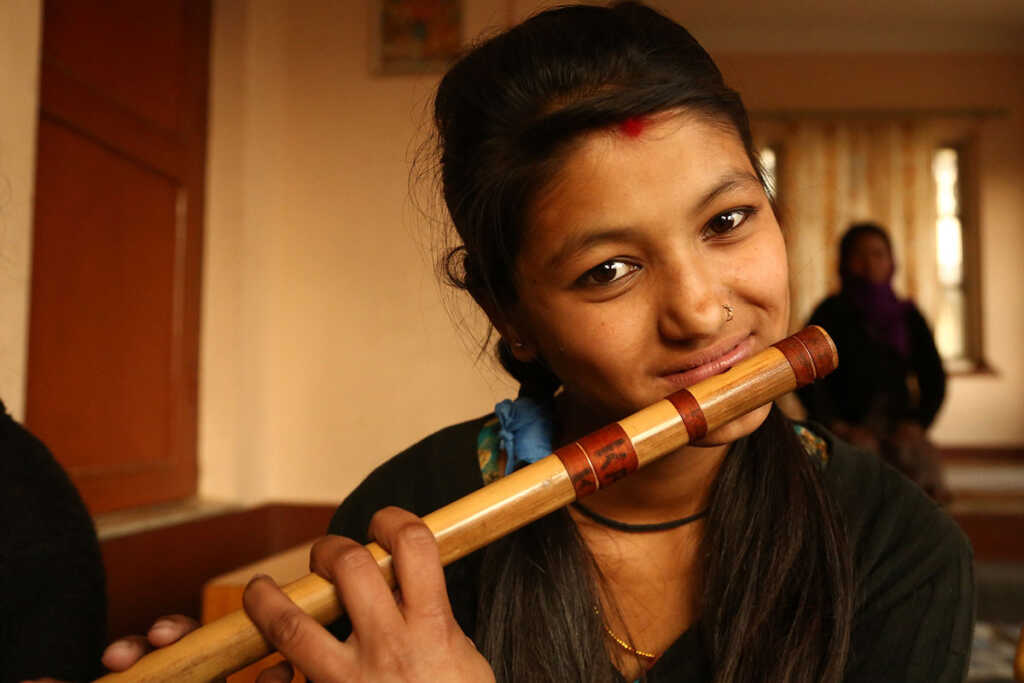
Bansuri is held horizontally and is inclined downwards when it is played. To produce sound or melody one has to cover the finger holes with the fingers of the left and right hand. Variations in pitch are produced by altering the effective length of the air column. The range of the bansuri or flute is about 2 and a half octaves. Long bansuris or flutes have a rich, deep and mellow tone whereas in small bansuris or flutes the tone is high pitched.
Sarangi, traditional a folk musical instrument especially played by Gandharva community in Nepal. Gandharvas used to travel across the nation and go home to home to sing the song of current affairs. Thus, sarangi in Nepal has been used as an instrument used to convey the message and news across the country.

It resembles the violin in western culture. Sarangi in Nepal is played for so many years and has its own famous rhythms and tones. The string-instrument is made of a piece of wood, the bottom of which is made a hollow, and four pieces of strings are fastened tightly with four wooden nails fixed on the top of it. It is played by rubbing on a group of strings especially left and right repeatedly with a small stick, which is fastened with some strings.
Tungna, a four-stringed instrument, somewhat similar to a sarangi, is also made up of a single piece of carved wood.
It resembles Sarangi but the two instruments are very different from each other. Tungna has a hollow cavity in the front which is covered by goat skin. In Sarangi, only the strings are made from sheep intestine, rest is all wood. The intestine of a carcass is pulled out after it’s rotten and woven to make the strings.

Initially, Tungna was played by the Tamang people during their festivities and special occasions and gatherings. But today, other communities also play Tungna to create a melodious sound alongside other instruments.
Jhyamta is a traditional musical instrument that looks similar to a cymbal. In Nepal, the Kirati community uses Jhyamta with dhol in various cultural festivals such as Sakela, Chyabrung, Udhauli, Ubhauli and other social functions.
Loud but rhythmic to the ears, Jhyamta belongs to the Panche Baja musical family. The right way to play is by rubbing the plates with the right hand rising and the left hand descending clashing the two plates. Another version of Jhyamta is Bhushyah.
Murchunga is a musical instrument it consists of a flexible metal or bamboo tongue or reed attached to a frame and it produces a sound like Binayo. Murchunga is also practiced among Kiranti people. It is played by plucking its metal wire reed with the forefinger being gripped between the teeth. The volume of the note can be varied by breathing in and out.

Dhimay is a drum-like Nepali musical instrument. It is played by Newars in Jatras and festivals alongside other musical instruments. In the traditional context, Dhimay is played with idiophones of different types, depending on the local tradition. According to local legends, the instrument is believed to have been invented by Lord Shiva.
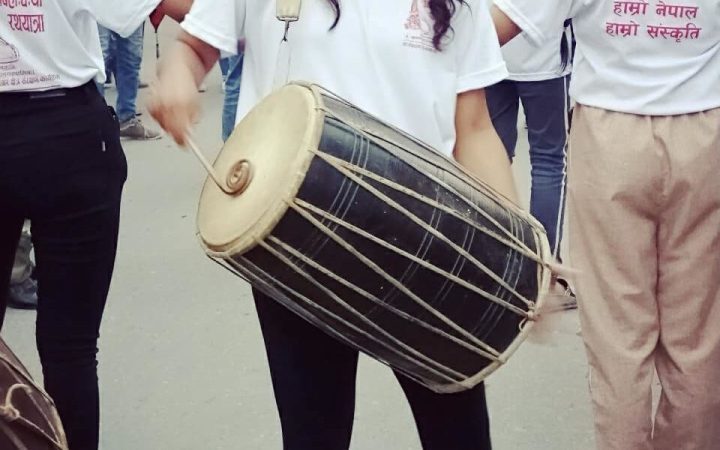
In Dhimay-ensembles, called Dhimaybaja, the drum is accompanied by cymbals like Bhushyah, Chushyah, and sometimes by Tai-nai, a gong-like instrument. Like Madal, Dhimay is made up of a single piece of wood but compared to madal, it produces a louder sound. These days, Dhimey is played as a sort of bass drum, accompanying western instruments like the guitar.
Jhyali is a traditional folk percussion instrument from Nepal. They are thinly walled, consist of a pair of round, metal plates, resembling cymbals, and are used in both folk and classical music in Nepal. Unlike most percussion instruments around the world, the Jhyali is played by rubbing the plates with the right hand rising and the left hand descending at the time when they clash.
These percussion instruments are made by a Nepali alloy that is called Pancha dhatu, which means five metals. The alloy consists of brass, copper, silver, zinc, and gold, and are usually made by blacksmiths.
Panche Baja
Panche Baja is called so because it is a group of five musical instruments played together. The five musical instruments in Panche Baja are.
1. Jhyamta/Jhurma (Cymbal):
It is one of the Panche Baja. It is a couple of flat round dish-like musical instruments made of brass or bronze, played by beating on each other.
2. Nagara/Damaha (A Drum):
It is also one of the Panche Baja. It is made of leather stretched over an end of a hollow copper bowl played by hitting with hands or sticks.
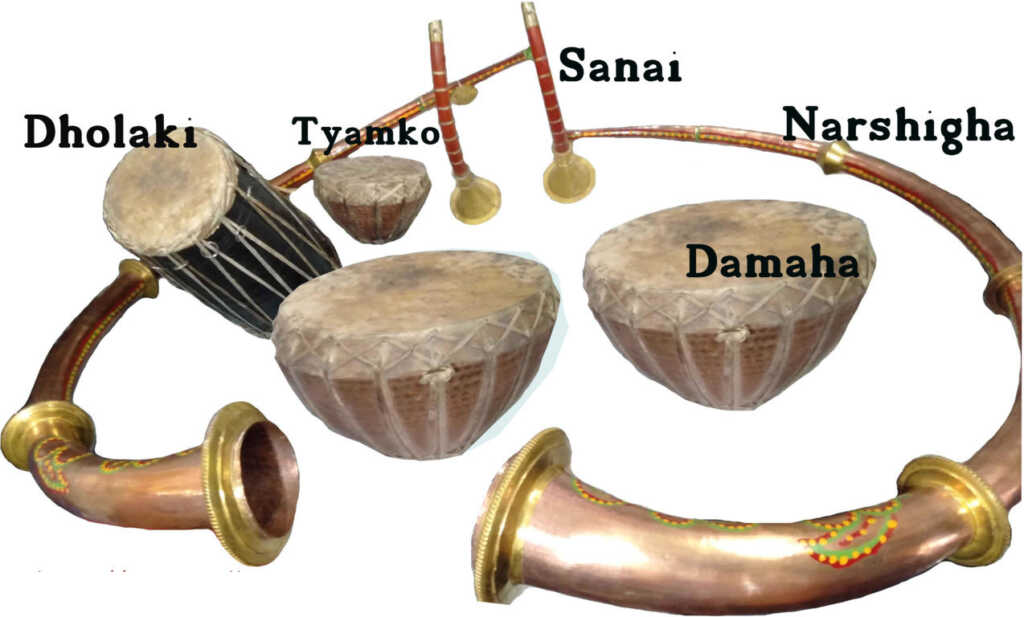
It is also one of the Panche Baja. It is similar to Damaha in shape but very small in size, played with two pieces of sticks called Gajo.
4. Sanai (A kind of clarinet):
It is one of the Panche Baja. It is made of a metal shaped like a pipe slightly bent forward has a couple of holes, reed on the top that you blow into.
5. Narsingha (A Trumpet):
It is one of Panache Baja Bajas made of two pieces of curved copper tube that is played by blowing air through its mouthpiece.
Khainjadi (A tambourine)
It is a kind of small drum made of skin stretched over an edge of rounded hollow wood. It is also played during Bhajan-kirtan by Hindus. Khaijadi is especially played on the occasion of singing a kind of song called Roila and Balam. Traditional Nepali-styled tambourine, completely hand-made using ox hide, seasoned wood, and bronze. Today it has been replaced by plastic tambourines.
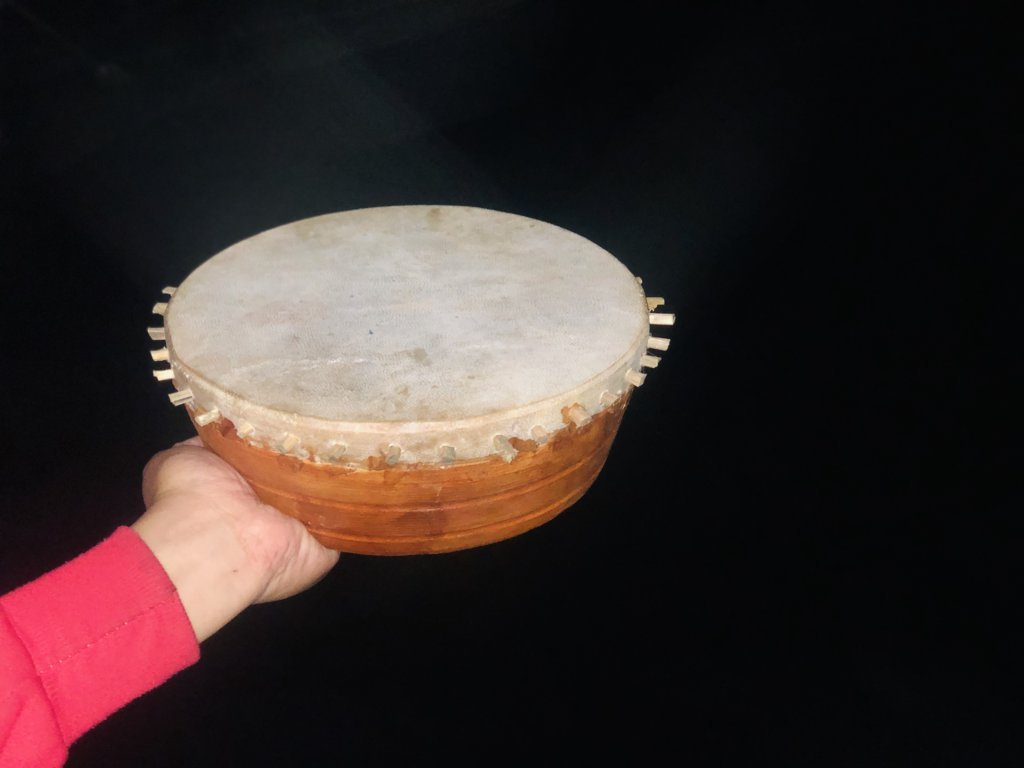
You might also like:
- Daura Suruwal Traditional Nepalese Dresses
- Bhuwa Naach- Traditional dance from the Farwest
RELATED ARTICLES MORE FROM AUTHOR
Tourism in nepal – wonders of nepal, the rautes ( nomads of nepal ), international women’s day 2023.
If some one desires expert view on the topic of running a blog then i recommend him/her to pay a visit this weblog, Keep up the nice job. Karlyn Eli Keg
I always emailed this weblog post page to all my friends, because if like to read it next my friends will too. Shoshana Innis Shelba
My brother suggested I might like this web site. He was entirely right. This post actually made my day. You cann’t imagine just how much time I had spent for this information! Thanks!
0mniartist asmr
Everything is very open with a really clear explanation of the issues. It was truly informative. Your site is extremely helpful. Thanks for sharing!
I’ve learn several excellent stuff here. Definitely worth bookmarking for revisiting. I wonder how much effort you put to create this sort of magnificent informative website.
Good site you have got here.. It’s difficult to find excellent writing like yours nowadays. I seriously appreciate people like you! Take care!!
Thank You …
LEAVE A REPLY Cancel reply
© 2019-2021 Wonders Of Nepal www.wondersofnepal.com
HOME l PRIVACY POLICY l CONTACT l ABOUT US
PASIC | DRUMFEST | DRUMSET MAGAZINE RHYTHM! DISCOVERY CENTER

RECOGNITION
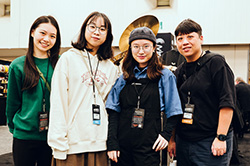
We have nearly 6,000 members, with over 40 chapters located across the United States and an additional 28 chapters abroad.
PARTICIPATE
PUBLICATIONS
EXPERIENCES
COMPETITIONS
SPECIALTIES
CAREER DEVELOPMENT
START WITH A SEARCH
Use our custom built resource library to search all resources by keyword, and filter by specialty, type of item, date, and more.
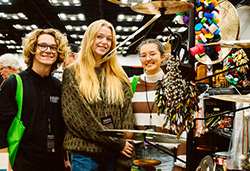
AT PAS , our mission is to inspire, educate, and support percussionists and drummers throughout the world.
Tha Madal: Popular Folk Drum of Nepal
The article is about the history, construction, and playing techniques of the madal, a popular double-headed drum found in Nepal.
Subscribe to continue reading
Continue your percussion discovery by joining the percussive arts society today..
You'll join a global community of thousands of other dedicated percussionists, drummers, music educators, and students committed to pursuing knowledge, enhancing their technique, and supporting each other.
Already a member? Sign in here.

Percussive Arts Society 127 E. Michigan St. #600 Indianapolis, IN 46204 T: (317) 974-4488 F: (317) 974-4499 E: [email protected]
Rhythm! Discovery Center Temporarily Closed while establishing new location. See our collection online!
#DRUMSETMAGAZINE
Join Our Newsletter
Join Renew Donate Advertise Our Team Search Resources FAQ

Copyright Percussive Arts Society 2024. Privacy Policy

Rhythm! Discovery Center
DRUMSET Magazine
About the PFC Foundation
Creating positive change through music education
- Mission & Vision
- Board of Directors
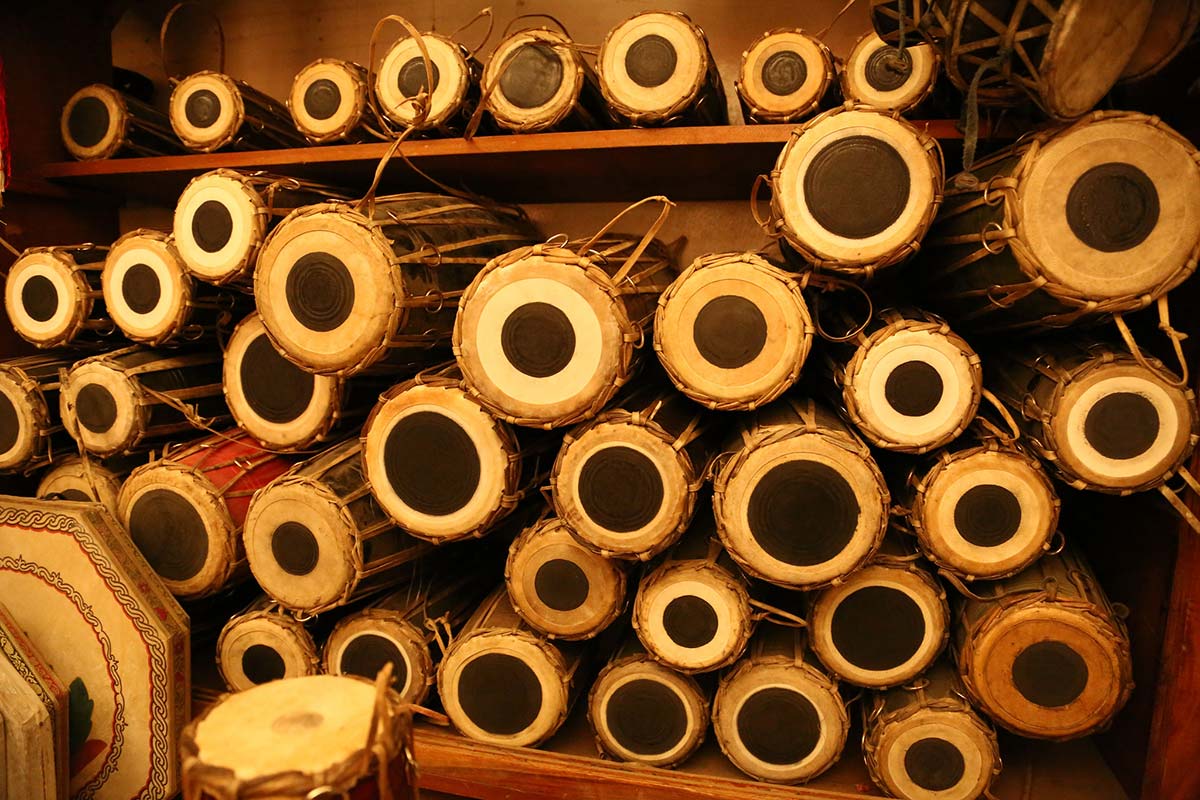
Considered the backbone of most Nepali folk music, the Madal is a typical Nepalese percussion instrument. The drum consists of a cylindrical body, it’s center has a slight bulge and the cylinder is closed on both ends. Typically, a wooden log is carved so as to form a hollow cavity. The madal is played horizontally and has a strand that goes around the waist of the person playing it. Playing technique involves rhythmic striking of either of the heads at each end with the palm of the hand. The heads vibrate to produce sound when struck. Also, the heads are not of the same size; the larger and the smaller heads are often referred to as male and female respectively. The madal is tuned using the strands that overlay the central body of the drum.
This instrument is taught at: Udayapur Music Program – Nepal Mitrata Nepal Music Program – Nepal
Culture and environment are very intertwined here in M’hamid. The weather turns from blistering hot in the summer (reaching 130 degrees Farenheit regularly in July and August) to sandstorm season in March and April, which helps to propagate the date palm trees, the economic power in the region. Climate change is a very real presence locally, with little access to water becoming normal, and the encroachment of sand dunes onto precious farmland happening right now, working to disperse not only communities, but ancient traditions with them.
In M’hamid there is a great importance placed on the community and people moving together in groups. Whether it be families of 10 living under the same roof eating from the same central Tagine dish for their meals, or the ritual of preparing and sharing tea with whomever may be around, foreigner or local, the sense of inclusion is vital to the community. The passing down of music and poetry from generation to generation is another vital aspect of the community, as art and tradition serve as reassurances in a constantly changing world. It is the role of the youngest generation to learn from the past to bring the traditional Saharan art into future, so at to coexist with the modern.
OR SEND AN EMAIL TO [email protected]
Your Name (required)
Your Email (required)
Your Message
Nepali Dance: Classical and folk dances of Nepal
Nepal, a small landlocked country nestled in the lap of the mighty Himalayas, is celebrated worldwide for its rich cultural heritage, and dance remains a quintessential element of this vibrant legacy. The diverse ethnic communities across the country maintain a deep connection with their ancestral roots and traditions, and this diversity is beautifully mirrored in Nepal’s multifaceted dance forms.
Dance in Nepal is more than mere entertainment; it is an amalgamation of art, spirituality, community, and storytelling, transcending the boundaries of caste, religion, and region. Each dance tells a tale, embodies a prayer, or celebrates life’s varied moments. In this blog post, we’ll dive into the entrancing world of Nepali dance, exploring some of the most captivating dance forms and their cultural significance.
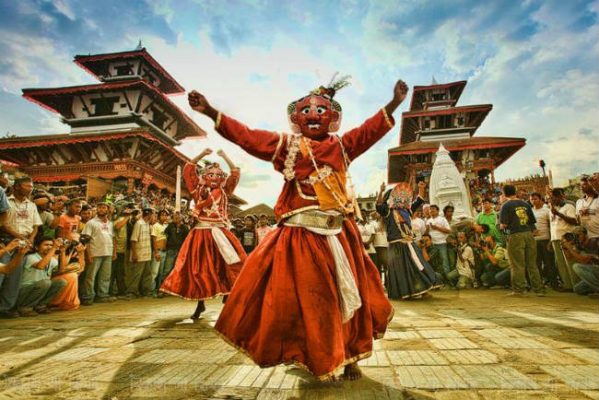
The Enchanting Dance Traditions of Nepal: A Window into Cultural Diversity
- Lakhe Naach: One of the most famous dance forms of Nepal, the Lakhe Dance, is a crucial part of the Indra Jatra festival celebrated annually in Kathmandu. Performers wear elaborate masks and costumes representing Lakhes – mythical demons from Nepali folklore. The dance aims to ward off evil spirits and is a dynamic display of vigour and fervour. Each leap and twirl performed by the Lakhe impersonators is a sight to behold.
- Maruni Naach: Originating from the western region of Nepal, Maruni Dance is traditionally performed during the Hindu festival of Tihar, and Dashain. Dancers adorned in colourful attire and extravagant jewelry, portray various stories through their energetic moves. The dance is accompanied by a jhyamta (a type of cymbal) and the madal (a traditional Nepali drum), creating a lively atmosphere that captivates the audience.
- Tamang Selo: This dance form is a cultural hallmark of the Tamang community, one of the indigenous ethnic groups of Nepal. The Tamang Selo is not just a dance but an expression of the Tamang community’s lifestyle, customs, and traditions. It is usually performed in a circle, with dancers moving rhythmically to the beat of the damphu – a small, round, handmade drum.
- Tharu Stick Naach: The Tharu Stick Dance, also known as Sakhiya, is a distinctive dance form performed by the Tharu community residing mainly in the Terai region of Nepal. The dancers, holding sticks, perform a sequence of rhythmic steps, symbolizing the community’s agrarian lifestyle. The dance is primarily performed during Maghi, the Tharu New Year, as an emblem of unity and communal strength.
- Ghantu Naach: Ghantu Dance holds significant importance in the Gurung community. Traditionally performed by women, the dance involves slow, measured movements and symbolizes various life stages, including birth, death, and rebirth. It carries profound religious significance, being performed during times of sickness, hardship, or to honor the local deities.
- Bhairav Naach: Named after Bhairav, the fierce manifestation of Lord Shiva, this dance is performed mainly in the Kathmandu valley during different festivals. Dancers don intricately designed masks, representing Bhairav and other deities and demons from the Hindu pantheon. The dance is an intense spiritual experience, showing the victory of good over evil and the divine’s protective nature.
- Deuda Naach: This dance hails from the midwestern and far western regions of Nepal. Participants form a circle, linking hands with the person next to them and dancing shoulder to shoulder. The popularity of this dance has now spread to other parts of the country.
- Chandi Naach: This dance is integral to the Rai community’s cultural celebrations. It is performed during their significant festivals, Undhauli and Ubhauli.
- Dandi Naach: Also known as Phagu Naach, this dance form is prominent during the festival of Phagu Purnima. Characterized by the rhythmic striking of two sticks between partners, Dandi Naach is particularly popular in the Terai region of Nepal.
- Dhan Naach: The Limbu community traditionally performs this dance to celebrate the harvest of major crops.
- Sorathi Naach: Yet another dance popular in the Gurung community, Sorathi Nritya involves participants moving in a circle to the beat of the Madal, a traditional drum.
- Maruni Naach: Originating in the eastern hills of Nepal, Maruni Nritya involves men performing dressed as women.
- Hanuman Naach: Mainly prevalent in the Baglung, Syangja, and other hilly regions, performers depict Hanuman, the devotee of Ram, in this dance form.
- Devi Naach: This dance is a special feature of the Gai Jatra festival that continues until Indrajatra, primarily in the Kathmandu Valley.
- Gauna Naach: Rooted in Mithila tradition and popular in the Janakpur region of Nepal, this dance is performed on religious occasions.
- Chyabrug Naach: This is a traditional dance of the Limbu community, performed to the tune of Chyabrug.
- Hopcha Naach: This traditional classical dance of the Rai community is mainly found in the Dhankuta region.
- Kaura Naach: Kaura Naach is a dance form primarily cherished among the Magars of the Western region and is accompanied by the Kaura song.
- Mundhum Naach: This dance is representative of the Kirat community. During the dance, the Kirat priest, known as DOPA, sings the song Mundhum.
- Khyali Naach: Also referred to as Pangdure dance, Khyali Naach is performed during festivals and poojas, set to the musical rhythm of Khainjadi and Mujuras.
- Chhokara Naach: Similar to Maruni dance, Chhokara Nritya is prevalent in the Far-western region of Nepal.
- Panchabuddha Naach: This dance form is based on Buddhist tradition and performed by a group of five individuals.
- Charitra Naach: Prominent in the Terai region, this dance draws its theme from the Puranas.
- Bhairab Naach: This classical dance, popular in Kathmandu and Pokhara, involves dancers assuming the guise of Bhairab.
In conclusion, the array of Nepali dances demonstrates the country’s deep-seated cultural richness and diversity. From Ghatu Nritya of the Gurung community to the Bhairab Nritya prevalent in Kathmandu and Pokhara, each dance form narrates a unique tale about the people, their traditions, beliefs, and lifestyles.
These dances, often linked with religious festivals, harvest seasons, and community celebrations, have transcended generations, shaping and preserving Nepal’s cultural heritage. The dances range from celebratory and lively, such as Dandi Naach during Phagu Purnima, to reflective and spiritual, like Panchabuddha Nritya based on Buddhist traditions.
Moreover, these dance forms also reflect Nepal’s geographical diversity, originating from the hilly terrains of Baglung to the plains of Terai and beyond. Every dance form is a vibrant tapestry woven with threads of history, tradition, spirituality, and community life, providing a glimpse into the multifaceted soul of Nepal.
In the age of rapid globalization, it’s heartening to see these traditional dance forms still thriving, holding a sacred space in the hearts of the Nepali people. They serve as a testament to the resilience and vibrancy of Nepal’s rich cultural ethos and a reminder of the importance of preserving these precious art forms for future generations.
Related Posts

Can you say some importance of classical dances and folk dance in 10 strong points
Very thanks! It’s very helpful for any people Thank you so much…….!
Could you please tell us of some of the origin from the dances? Thanks
CHAYADU DANCE This dance belongs to the Gurung community. it is performed in death rituals in Gurung community SERGA NACH This dance belongs to the Gurung community. it is performed in death rituals in Gurung community. RITESHI DAnce This dance belongs to the Gurung community. it is performed in death rituals in but dance is performed by gurung prist Pachyu Klebri and bonpo lam.
Saraya Dance Vanako K Ho ?
Maruni dance is perform by magars in western region not in eastern region the description about maruni is wrong
Email Address: *
Notify me of follow-up comments by email.
Notify me of new posts by email.
This site uses Akismet to reduce spam. Learn how your comment data is processed .
- Nepal Foreign Exchange Rates | Nepalese Rupees Exchange
- Nepali Calendar – Dashain, Tihar, Chhath, Losar, and More
- Nepali Date Converter – From Nepali to English
- Preeti to Unicode Converter | Nepali Unicode
- Terms and Conditions
- Unicode to Preeti Converter | Nepali Unicode

26 Nepali Musical Instruments Names with Pictures
As Nepal is rich in culture and tradition, we have many traditional musical instruments due to the diversification of people living here, these musical instruments differ as per the places, people, races, culture, festivals, religions, and people. Most of these instruments are played on special occasions like marriage ceremony, festivals, fairs, Jatras, or any other special events.
Music is played in Nepal from Mountain to the Terai region of Nepal. The research said that there are around 200 original instruments in Nepal. Among them, 108 types are still playing across the nation. Panche baja is the most musical instrument in Nepal and specially used on the marriage ceremony. Similarly, the Newar community uses a lot of musical instruments from basuri, jhyamta, dholak during their Jatras and other ceremonies. These musical instruments are popular not just in Nepal but also famous outside the country too.
Basically, a musical instrument is divided into three categories on the basis of the nature of playing:
- String : These musical instruments are used of different lengths and have vibrating strings such as Sarangi, Sitar.
2. Wind : These musical instruments create melodious sounds using the length of air. Generally, these instruments create sound when blown such as Basuri, Sanai, Murali, etc.
3. Percussion: Musical instruments that need physical pressure which is played by hitting with hand or stick such as drum, Madal. etc.
Here we have listed most of the famous Musical instrument in Nepal.
This normal Nepalese percussion device is the backbone of a maximum of Nepali folk music. It is one of the well-known folk musical instruments related to our lifestyles. Madal has a cylindrical frame with a slight bulge at its middle and heads at each ends, one head large than the other. This device is made in particular with pores and skin stretched over each of the ends of a timber hole tube and tightened with leather-based strings, for the convenience it has a strand that is going across the waist of the individual playing it to maintain it horizontally.

Madal broadly used as a hand drum in Nepal. It is assumed that it turned into first delivered with the aid of using the Magar community, but it is equally popular among all the Nepalese society.
The tune of Madal can not stop anyone from dancing, that’s why in most of the Nepali folk songs, Madal is compulsorily used.
2. Flute – Bansuri
Bansuri is one of the best Nepali Musical Instrument. The word “Bansuri” originates from the Sanskrit word “Bans” which simply means bamboo and “Sur” which means musical note. The pitch and sound of the Bansuri depend on the length and thickness of the bamboo used. The bamboo chosen to make the flute must be selected very carefully.
It is a cylindrical tube product of bamboo with a uniform bore and closed at one end. It is made from a single length of bamboo and has six to eight open fingers holes which constitute the musical notes.

To produce sound or melody one has to cover the finger holes with the hands of the left and proper hand. Bansuri is held horizontally and is willing downwards while it’s far played. Variations in pitch are produced by changing the powerful length of the air column. The variety of the bansuri or flute is set 2 and a 1/2 of octaves. Long bansuris or flutes have a rich, deep, and mellow tone while in small bansuris or flutes the tone is excessive pitched.
Sarangi resembles the violin in western culture. It is traditionally a folk musical instrument mainly performed with the aid of using the Gandharva community in Nepal. Sarangi in Nepal is performed for many years and features its personal well-known rhythms and tones. Gandharvas used to travel across the country and pass home to home, sing the track of contemporary affairs. Thus, Sarangi in Nepal has been used as an instrument to bring the message and information throughout the country.

Sarangi is made from a piece of wood, the lowest of that’s made a hole and 4 portions of strings are mounted tightly with 4 wooden nails constant at the top of it. It is performed with the aid of using rubbing on a group of strings mainly left and ) again and again with a small stick, that’s mounted with a few strings.
4. Murchunga

Murchunga is a traditional Nepali musical instrument and it can also be referred to as one of the oldest musical instruments in the world. It is a soothing and soulful instrument, is made with a flexible metal or bamboo tongue attached to a lyre-shaped frame.
Murchunga is likewise practiced amongst Kiranti people. It is performed by plucking its metal cord reed with forefinger being gripped among the teeth. The extent of the note may be various by inhaling and out.
When in THAMEL you can catch on a Murchunga player and experience absolute serendipity hearing the sound of the fabulous musical instrument.
Dhimaya, Dhimaya, or Dhimabaja is a drum performed by the Newars in Nepal. It is performed collectively with different musical instruments. The length of this device varies from a diameter of forty inches to fifty-one inches and a length of 17 inches to 21 inches. The outer part of the drum is made from wooden or metal.

Old Dhimey has a few abnormal shapes however present-day drums are either cylindrical or barely barrel-shaped. On the inside of the left side, referred to as Mankhah (Haima in Bhaktapur) a red tuning paste is implicated, presenting a deep sound. There are kinds of dhimay. The smaller ones are referred to as “Dhaacha Dhimay” and larger are referred to as “Ma Dhimay”.
6-10. Panche Baja
Panche Baja is a group of five musical instruments. This musical instrument replayed together during the marriage. The five musical instruments in Panche Baja are:

- Narsingha (Trumpet): It is made of two pieces of curved copper tube that is played by blowing air through its mouthpiece.
- Damaha : It is made of leather stretched over an end of a hollow copper bowl played by hitting with hands or sticks.
- Tyamko: It is similar to Damaha in shape but very small in size, played with two pieces of sticks called Gajo.
- Sanai : It is made of a metal shaped like a pipe slightly bent forward has a couple of holes, reed on the top that you blow into.
- Dholak i: It is manufactured from timber that is a hole inside and covered with leather.

Jhyali is a conventional folk percussion tool from Nepal. This tool is made through a Nepali alloy, referred to as Pancha Dhatu (5 metals). The alloy includes brass, copper, silver, zinc, and gold, and is typically made by blacksmiths. They are thinly walled, encompass a pair of round, steel plates, comparable to cymbals, and are utilized in each folk and classical songs in Nepal. Jhyali is performed through rubbing the plates with the proper hand rising and the left hand descending on the time once they clash.
12. Jhyamta

It is a couple of flat round dish-like musical instruments made of brass or bronze, played by beating on each other.

Tungna is a famous musical tool used in the Himalayan region of Nepal. It is crafted from the timber of Rhododendron and has 4 wires just like the Sarangi.
14. Khainjadi

Khaijadi is a type of small drum manufactured from skin stretched over a fringe of a rounded hole timber. It is specially performed at the event of singing a kind of song called Roila and Balam. It is likewise performed for the duration of Bhajan-kirtan through Hindus. Traditional Nepali-styled, absolutely hand-made using ox hide, seasoned timber, and bronze.

Damphu tool is used in Tamang community and made through masking the timber with leather.
17. Dhyangro

Dhyangro is a kind of drum manufactured from hollow timber by stretching leather each of its edges and performed with a curved stick known as Gajo. This is a traditional medical remedy triumphing in Nepal. It is mainly utilized by faith healers (Dhami/Jhakri) at the event of worshiping or treating humans.

Pungi is made through a coconut shell, is a hollow bamboo pipe. It is performed to reveal the snake dance in the Terai region of Nepal.
19. Yalamber

Yalamber is manufactured from bamboo with wires. It is utilized by the Kirat community.
20. Ekatare

Ekatare is utilized by the sages and ascetics and manufactured from timber, leather, and string.

Urni is performed especially through the Dhimal Community manufactured from the outer hardcover of the coconut through stretching leather and fastening a string with a rod.

Masak baja (as seen in the picture) is an ancient bagpipe instrument made of leather, commonly played at celebrations like weddings. It forms a part of the ‘Antique Indian Musical Instruments’ of the – Albert Hall Museum, Jaipur.

Sankha is made from a big shell of the conch discovered within the sea and ocean. It is performed through blowing air with our mouth. Sankha is performed during puja and different non-secular ceremonies of the Hindus. It is likewise blown while the dead body is taken for cremation.
24. Irlung pipari

Irlung Pipari is a small musical instrument made from bamboo. It is smaller than the flute, manufactured from horns of Krishna Saar (black antelope), and used to provide sound blowing into. It is especially utilized by Jogis to blow across the homes of humans, believing that there might be no damage from evils.

Tabla is taken in “Leather Slaughter (छाला बध्यबादन)” so it is called tall badan. It is a traditional musical instrument that originated from the Indian subcontinent. It consists of a pair of drums, used in traditional, classical, popular, and folk music.

Dafali is also an Indian originated musical instrument from the Muslim community. It is very popular in Nepal during puja and bhajan-kirtan and mostly played in the Terai community in Nepal. Also during, Deusi-Bhailo, it is commonly used in Nepal.
Recommended Readings: List of Colors with meanings and Nepali names
3 Best Ad-Free Android Photo-Editing Apps for Mobile Photography
Check: 6 BEST MUSIC STORES AROUND KATHMANDU
Share with your friends:
- Click to share on Facebook (Opens in new window)
- Click to share on X (Opens in new window)
- Click to share on WhatsApp (Opens in new window)
- Click to email a link to a friend (Opens in new window)
- Click to share on Pinterest (Opens in new window)
- Click to share on LinkedIn (Opens in new window)
- Click to share on Reddit (Opens in new window)
- Click to print (Opens in new window)

Essay on Nepali Culture
Students are often asked to write an essay on Nepali Culture in their schools and colleges. And if you’re also looking for the same, we have created 100-word, 250-word, and 500-word essays on the topic.
Let’s take a look…
100 Words Essay on Nepali Culture
Introduction to nepali culture.
Nepali culture is like a beautiful garden with many kinds of flowers. It is a mix of traditions, values, and customs. This culture comes from the people of Nepal, a country in South Asia. It is known for its mountains, like Mount Everest, and its history.

Language and Religion
In Nepal, many people speak Nepali, but there are over 120 other languages too. Religion is important, with Hinduism and Buddhism being the most followed. Many festivals come from these religions, which people celebrate with joy.
Festivals and Food
Nepali festivals are colorful and full of life. Dashain and Tihar are the biggest ones. People eat special foods, play music, and enjoy dances. The food in Nepal is tasty and includes dishes like dal bhat (rice and lentils) and momo (dumplings).
Traditional Clothing
In Nepal, traditional clothes are worn with pride. Men wear a daura-suruwal and women wear a sari or kurta. These clothes are often made with bright colors and fine materials, showing the beauty of Nepali handwork.
Art and Music
250 words essay on nepali culture.
Nepali culture is like a beautiful garden with many kinds of flowers. It is rich with traditions, festivals, music, and dances. Nepal is a country in South Asia, home to the tall Mount Everest and many other mountains. The people living there come from different backgrounds and speak many languages, but they all share the culture of Nepal.
Festivals and Celebrations
One of the most important parts of Nepali culture is festivals. Dashain is the biggest festival where families come together, enjoy food, and children get gifts. Tihar, another festival, is when people light up their homes with candles and lamps. They also honor animals like crows, dogs, and cows. These festivals show how Nepalese people love family, nature, and animals.
Food in Nepal
The food of Nepal is tasty and unique. Dal Bhat, which is rice and lentil soup, is a common meal. Momos, which are like dumplings filled with meat or vegetables, are very popular too. The food is not just about eating; it is a way for families to sit together and share their day.
In Nepal, people wear special clothes that are part of their culture. Men often wear a dress called Daura-Suruwal and a cap named Dhaka Topi. Women wear beautiful long skirts called Gunyu Cholo. These clothes are not just for daily wear but also for special occasions to show respect to their culture.
In conclusion, Nepali culture is full of life, colors, and joy. It brings people together through festivals, food, and clothing. Even though it has many different parts, they all fit together to make the culture of Nepal special and interesting for everyone, especially for students learning about new places in the world.
500 Words Essay on Nepali Culture
In Nepal, many languages are spoken. Nepali is the main language, but people also speak Maithili, Bhojpuri, and dozens of other languages. This shows how diverse the country is. Religion is a big part of life in Nepal. Most people follow Hinduism or Buddhism. The two religions mix in many ways, showing respect and peace among the people.
Nepal is known for its colorful festivals. Dashain is the biggest festival. It is a time when families come together, share food, and give blessings. Tihar, also known as the festival of lights, is another important celebration. People light up their homes and honor animals like dogs and cows. These festivals show the joy and kindness in Nepali culture.
Food and Cuisine
The clothes in Nepal are bright and beautiful. Women often wear sarees or a long skirt called a ‘gunyu cholo’. Men wear a ‘daura suruwal’, which is a shirt and trousers with a Nepali style. These clothes are worn with pride, especially during festivals and important events. They are a symbol of the Nepali way of life.
Music and Dance
Music and dance are important in Nepal. They tell stories of the land and its people. Traditional instruments like the ‘madal’ and ‘sarangi’ make music that touches the heart. Folk dances are performed during festivals. They are full of energy and smiles, showing the happiness of the Nepali spirit.
Arts and Crafts
Nepali culture is a wonderful mix of people, traditions, and nature. It is like a colorful painting that tells a story of harmony and friendship. The culture is deep and alive, touching everyone who experiences it. It is a treasure that the people of Nepal share with the world, and it makes the country a special place full of warmth and beauty.
That’s it! I hope the essay helped you.
If you’re looking for more, here are essays on other interesting topics:
Happy studying!
Academia.edu no longer supports Internet Explorer.
To browse Academia.edu and the wider internet faster and more securely, please take a few seconds to upgrade your browser .
Enter the email address you signed up with and we'll email you a reset link.
- We're Hiring!
- Help Center

Writing essays: Motives, Processes and Structures (in Nepali)

This paper in the Nepali language explores motives, processes and structures for writing creative essays.
Related Papers
Nevin Farida
This research examines English language and literature essays written by First Year students of the English Department at Dhaka University (Bangladesh) using multi-method genre analysis. The first method used was text analysis. Essay topics were analysed from the two contexts to identify their topic fields and main rhetorical functions. This helped develop the two models to analyse the structure of essays: an Exposition-Discussion model and a Description-Recount model. Then, a total of 100 essays from the two contexts were analysed on the basis of Move-strategy structure to see what structural patterns the essays possessed, what tactical choices the students took to express the moves and what was presented in terms of content matter within those moves. The second method was a questionnaire that was distributed to students in the department to discover their perceptions of the writing tasks given. And the third method was interviews conducted with teachers and students of the departm...
Shanlax International Journal of English
Iffat Jahan Suchona
Although smart writing skill is equally important in both academic and professional spheres, many Bangladeshi tertiary level learners find writing skills too difficult to be developed. In respect of this, the students are given many writing tasks (such as composing a five-paragraph essay) to improve their competencies in a language classroom. Anyhow, writing a good essay needs several cognitive steps that a student has to go through demanding a high level of motivation and constructive teacher feedback. Considering the fact, this paper has investigated tertiary level Bangladeshi learners’ perspectives about how the essay-writing tasks keep them motivated in class. This pilot project had been conducted using a set of 20 items (quantitative survey questionnaire), which was administered among thirty participants from the Department of English of a reputed Bangladeshi public university. The small-scale research revealed that the majority of the undergraduates stay motivated during the b...
Journal of NELTA
Jagadish Paudel
Teachers’ experiences prove that second language writing (L2 writing) is a challenging task. Embracing a phenomenological approach to research, this study unpacks teachers’ lived experiences of teaching English as a second language (ESL) writing at the undergraduate (bachelor) level in Nepal. Specifically, it explores how teachers teach writing, what kind of assignments they assign to their students, what they feel comfortable and uncomfortable with teaching writing, what they want to improve in their teaching, and what their students struggle with in carrying out their assignments. For collecting data, I used a written open-ended questionnaire as a research tool and I analyzed the resulting data thematically. The study reveals that, out of nine teachers, only four strove to embrace a process approach to writing. The findings show that, as reported by the teachers, students most often react negatively to writing assignments and struggle in their writing. The teachers assign several ...
Betsy Gilliland
International Journal of Language and Literary Studies
gopal pandey
Assessing students’ needs is an integral part of English for specific purposes (ESP) syllabus design. Due to the significance of writing in the English for business specific purposes, there has been increasing interest in ESP studies to assess students’ writing needs. This study aimed at exploring writing needs of Bachelor of Business Studies students of Tribhuvan University (TU), Kathmandu, Nepal. Ninety two Bachelor of Business Studies (BBS) first year students and 10 English teachers of TU took part in this study. Questionnaires served as the main tools for conducting needs analysis (NA). The findings revealed that both the groups of participants (students and teachers) perceived all seven sub-skills of writing as ‘important’. There is consistency between students’ perceptions of importance of subskills of writing and teachers’ perception of importance of the sub-skills. Regarding the perceived competence, teacher participants found their students’ abilities to be “not very good”...
The 11 FLA International Conference Proceedings
Dedi Turmudi
This research discusses the genre-based materials of English Essay for University Students in Lampung province. The goal of this study is to yield a product that will be used as students’ handbook at universities level. A research question is formulated: what are eligible contents to include in the designing material English Essay?. The students at English Department of FKIP Universitas Muhammadiyah Metro spread over different semesters and enrollments are taken as the subject. This is a research and development study with a specific procedure called formative; self-evaluation, expert review, one-to-one, small group, dan field test. The result shows that many various aspects are recommended to include in the English essay book since they are believed to enhance the learners’ achievement. The result of the needs analysis shows that there are many aspects to include in the designed Essay Writing book. The next stages of this study are to process all phases as formulated in order to yield the validated prototype of the designed English essay book. Keywords: Essay Materials, Genre-based, University Students
JOURNEY (Journal of English Language and Pedagogy)
hernina lestari
This study aims at discovering the possible motivational factors affecting English Department students in writing essay. Employing descriptive qualitative mode of research, the researcher tried to figure out the concerning factors especially the motivational areas which possibly became the major support and/or hindrance for the students to write essay. To meticulously note down the result, the researcher made use of unstructured interview as the method of collecting the data. The result found teacher’s overall performance, peers’ performance, parent’s involvement, and classroom ambience as the dominant motivational factors affecting students’ performance in writing essay. Future researchers are suggested to study the more specific areas of motivational factors affecting students in writing essay to get better and deeper understanding.
asep nurjamin
An issue regarding writing as a challenging skill to be mastered in many languages is in line with Lindastom (2007) as cited in Westwood (2008:57) which stated that many students experience difficulties on writing greater than on reading activity related to the complexity aspect. Dealing with the issue, this study aimed at uncovering the students’ barriers in mastering their writing skill conducted in tertiary level. Qualitative in form of case study through triangulation involving observation, questionnaire, and interview was employed. As the result, students’ main barriers in writing are divided into three parts; the components of writing, the intrinsic factor of students, and the extrinsic factor of students’ writing activity. Keywords : Students’ barriers, writing skill, analytical exposition text
Indonesian Journal of Applied Linguistics
usep kuswari
Celt: A Journal of Culture, English Language Teaching and Literature
Hikmah Zalifah Putri
Loading Preview
Sorry, preview is currently unavailable. You can download the paper by clicking the button above.
RELATED PAPERS
Common Ground Research Networks
Indonesian EFL Journal
nurul hasanah
Imelda Hermilinda Abas , Noor Hashima Abd Aziz
Pushpavali Perumal
Mohammad Shamsuzzaman
desi ratnasari
Anzavia Putri
Proceedings of the 3rd International Seminar on English Language and Teaching (ISELT - 3)
Syayid Sandi Sukandi
Kim Hua Tan
IJHCS IJHCS
Proceedings of the 4th International Conference on Language, Literature, and Education (ICLLE-4 2021)
Siti Ainim Liusti
kalpana iyengar , Roxanne Henkin
Danny Nugraha
Teguh Budiharso
Mahesh Paudyal
Issues in Applied Linguistics
Ali Shehadeh
Can. Ayu Ristya W -19.0003
International Journal of Psychology and Educational Studies
QAMAR SALEEM
Elvina Gusman
AL-ISHLAH: Jurnal Pendidikan
Naniana N I M R O D Benu
Gyanendra Yadav
สมศักดิ์ แก้วนุช
NELTAELT Forum
New Writing
Asma Mansoor
- We're Hiring!
- Help Center
- Find new research papers in:
- Health Sciences
- Earth Sciences
- Cognitive Science
- Mathematics
- Computer Science
- Academia ©2024
N ep BERT a: N epali Language Model Trained in a Large Corpus
Sulav Timilsina , Milan Gautam , Binod Bhattarai
Export citation
- Preformatted
Markdown (Informal)
[NepBERTa: Nepali Language Model Trained in a Large Corpus](https://aclanthology.org/2022.aacl-short.34) (Timilsina et al., AACL-IJCNLP 2022)
- NepBERTa: Nepali Language Model Trained in a Large Corpus (Timilsina et al., AACL-IJCNLP 2022)
- Sulav Timilsina, Milan Gautam, and Binod Bhattarai. 2022. NepBERTa: Nepali Language Model Trained in a Large Corpus . In Proceedings of the 2nd Conference of the Asia-Pacific Chapter of the Association for Computational Linguistics and the 12th International Joint Conference on Natural Language Processing (Volume 2: Short Papers) , pages 273–284, Online only. Association for Computational Linguistics.
- Skip to main content
- Skip to secondary menu
- Skip to primary sidebar
- Skip to secondary sidebar
- Skip to footer

John Snow Labs Launches API Endpoints for Medical Language Models
by Fred Pennic 08/14/2024 Leave a Comment

What You Should Know:
– John Snow Labs , a leader in AI for healthcare announced the release of API endpoints for its medical language models on AWS SageMaker, Databricks Marketplace, and Snowflake Marketplace. This development simplifies access to advanced healthcare AI capabilities for a wider audience.
– With this new offering, customers can now deploy private API endpoints with just a few clicks, eliminating the need for complex infrastructure management. These endpoints provide access to a range of healthcare language understanding tasks, including medical text de-identification, summarization, information extraction, and question answering.
– A key differentiator of this solution is its focus on data privacy and security. Unlike other providers, John Snow Labs ensures that sensitive patient data remains within the customer’s infrastructure, never being shared with a third party. This approach aligns with the stringent security and compliance requirements of the healthcare industry.
Reader Interactions
- Reprints and Permissions
- Submit An Op-Ed
Editorial Coverage
- Care Coordination
- Interoperability
- Population Health Management
- Revenue Cycle Management
- Artificial Intelligence
- Blockchain Tech
- Precision Medicine
- Accountable Care
- Medicare Advantage
Subscribe to HIT Consultant Media
Latest insightful articles delivered straight to your inbox weekly
How to cite ChatGPT

Use discount code STYLEBLOG15 for 15% off APA Style print products with free shipping in the United States.
We, the APA Style team, are not robots. We can all pass a CAPTCHA test , and we know our roles in a Turing test . And, like so many nonrobot human beings this year, we’ve spent a fair amount of time reading, learning, and thinking about issues related to large language models, artificial intelligence (AI), AI-generated text, and specifically ChatGPT . We’ve also been gathering opinions and feedback about the use and citation of ChatGPT. Thank you to everyone who has contributed and shared ideas, opinions, research, and feedback.
In this post, I discuss situations where students and researchers use ChatGPT to create text and to facilitate their research, not to write the full text of their paper or manuscript. We know instructors have differing opinions about how or even whether students should use ChatGPT, and we’ll be continuing to collect feedback about instructor and student questions. As always, defer to instructor guidelines when writing student papers. For more about guidelines and policies about student and author use of ChatGPT, see the last section of this post.
Quoting or reproducing the text created by ChatGPT in your paper
If you’ve used ChatGPT or other AI tools in your research, describe how you used the tool in your Method section or in a comparable section of your paper. For literature reviews or other types of essays or response or reaction papers, you might describe how you used the tool in your introduction. In your text, provide the prompt you used and then any portion of the relevant text that was generated in response.
Unfortunately, the results of a ChatGPT “chat” are not retrievable by other readers, and although nonretrievable data or quotations in APA Style papers are usually cited as personal communications , with ChatGPT-generated text there is no person communicating. Quoting ChatGPT’s text from a chat session is therefore more like sharing an algorithm’s output; thus, credit the author of the algorithm with a reference list entry and the corresponding in-text citation.
When prompted with “Is the left brain right brain divide real or a metaphor?” the ChatGPT-generated text indicated that although the two brain hemispheres are somewhat specialized, “the notation that people can be characterized as ‘left-brained’ or ‘right-brained’ is considered to be an oversimplification and a popular myth” (OpenAI, 2023).
OpenAI. (2023). ChatGPT (Mar 14 version) [Large language model]. https://chat.openai.com/chat
You may also put the full text of long responses from ChatGPT in an appendix of your paper or in online supplemental materials, so readers have access to the exact text that was generated. It is particularly important to document the exact text created because ChatGPT will generate a unique response in each chat session, even if given the same prompt. If you create appendices or supplemental materials, remember that each should be called out at least once in the body of your APA Style paper.
When given a follow-up prompt of “What is a more accurate representation?” the ChatGPT-generated text indicated that “different brain regions work together to support various cognitive processes” and “the functional specialization of different regions can change in response to experience and environmental factors” (OpenAI, 2023; see Appendix A for the full transcript).
Creating a reference to ChatGPT or other AI models and software
The in-text citations and references above are adapted from the reference template for software in Section 10.10 of the Publication Manual (American Psychological Association, 2020, Chapter 10). Although here we focus on ChatGPT, because these guidelines are based on the software template, they can be adapted to note the use of other large language models (e.g., Bard), algorithms, and similar software.
The reference and in-text citations for ChatGPT are formatted as follows:
- Parenthetical citation: (OpenAI, 2023)
- Narrative citation: OpenAI (2023)
Let’s break that reference down and look at the four elements (author, date, title, and source):
Author: The author of the model is OpenAI.
Date: The date is the year of the version you used. Following the template in Section 10.10, you need to include only the year, not the exact date. The version number provides the specific date information a reader might need.
Title: The name of the model is “ChatGPT,” so that serves as the title and is italicized in your reference, as shown in the template. Although OpenAI labels unique iterations (i.e., ChatGPT-3, ChatGPT-4), they are using “ChatGPT” as the general name of the model, with updates identified with version numbers.
The version number is included after the title in parentheses. The format for the version number in ChatGPT references includes the date because that is how OpenAI is labeling the versions. Different large language models or software might use different version numbering; use the version number in the format the author or publisher provides, which may be a numbering system (e.g., Version 2.0) or other methods.
Bracketed text is used in references for additional descriptions when they are needed to help a reader understand what’s being cited. References for a number of common sources, such as journal articles and books, do not include bracketed descriptions, but things outside of the typical peer-reviewed system often do. In the case of a reference for ChatGPT, provide the descriptor “Large language model” in square brackets. OpenAI describes ChatGPT-4 as a “large multimodal model,” so that description may be provided instead if you are using ChatGPT-4. Later versions and software or models from other companies may need different descriptions, based on how the publishers describe the model. The goal of the bracketed text is to briefly describe the kind of model to your reader.
Source: When the publisher name and the author name are the same, do not repeat the publisher name in the source element of the reference, and move directly to the URL. This is the case for ChatGPT. The URL for ChatGPT is https://chat.openai.com/chat . For other models or products for which you may create a reference, use the URL that links as directly as possible to the source (i.e., the page where you can access the model, not the publisher’s homepage).
Other questions about citing ChatGPT
You may have noticed the confidence with which ChatGPT described the ideas of brain lateralization and how the brain operates, without citing any sources. I asked for a list of sources to support those claims and ChatGPT provided five references—four of which I was able to find online. The fifth does not seem to be a real article; the digital object identifier given for that reference belongs to a different article, and I was not able to find any article with the authors, date, title, and source details that ChatGPT provided. Authors using ChatGPT or similar AI tools for research should consider making this scrutiny of the primary sources a standard process. If the sources are real, accurate, and relevant, it may be better to read those original sources to learn from that research and paraphrase or quote from those articles, as applicable, than to use the model’s interpretation of them.
We’ve also received a number of other questions about ChatGPT. Should students be allowed to use it? What guidelines should instructors create for students using AI? Does using AI-generated text constitute plagiarism? Should authors who use ChatGPT credit ChatGPT or OpenAI in their byline? What are the copyright implications ?
On these questions, researchers, editors, instructors, and others are actively debating and creating parameters and guidelines. Many of you have sent us feedback, and we encourage you to continue to do so in the comments below. We will also study the policies and procedures being established by instructors, publishers, and academic institutions, with a goal of creating guidelines that reflect the many real-world applications of AI-generated text.
For questions about manuscript byline credit, plagiarism, and related ChatGPT and AI topics, the APA Style team is seeking the recommendations of APA Journals editors. APA Style guidelines based on those recommendations will be posted on this blog and on the APA Style site later this year.
Update: APA Journals has published policies on the use of generative AI in scholarly materials .
We, the APA Style team humans, appreciate your patience as we navigate these unique challenges and new ways of thinking about how authors, researchers, and students learn, write, and work with new technologies.
American Psychological Association. (2020). Publication manual of the American Psychological Association (7th ed.). https://doi.org/10.1037/0000165-000
Related and recent
Comments are disabled due to your privacy settings. To re-enable, please adjust your cookie preferences.
APA Style Monthly
Subscribe to the APA Style Monthly newsletter to get tips, updates, and resources delivered directly to your inbox.
Welcome! Thank you for subscribing.
APA Style Guidelines
Browse APA Style writing guidelines by category
- Abbreviations
- Bias-Free Language
- Capitalization
- In-Text Citations
- Italics and Quotation Marks
- Paper Format
- Punctuation
- Research and Publication
- Spelling and Hyphenation
- Tables and Figures
Full index of topics
मादल. छतिउन, दार तथा खमारीको काठबाट मादल बनाइन्छ । काठमा ढुङ्ग्रो पारेर दुवैपट्टी छालाले मोरेर खरी (मसला) लगाइएको हुन्छ । खरी बनाउँदा काँस र किटको धूलो ...
The madal (Nepali: मादल) or maadal is a Nepalese folk musical instrument. [1] The madal is used mainly for rhythm-keeping in Nepalese folk music.It is very popular and widely used as a hand drum in Nepal.The madal has a cylindrical body with a slight bulge at its center and heads at both ends, one head larger than the other.
Madal is a two-faced hand drum used in Nepali music. It is also well-known throughout the world as a percussion instrument commonly employed in Nepali traditional music. In terms of its structure ...
The Madal: Nepal's Musical Heartbeat. Hiding away in the Himalayan foothills is a rich musical heritage, with the madal—a double-headed hand drum that forms the foundation of Nepali folk music—beating at its heart. The madal is a cultural treasure that is more than just an instrument, with a history that is deeply associated with Nepal ...
Madal, one of the most popular double-headed hand drums played in Nepalese society and has there been from the early 20th century. The word Madal has been formed from the Sanskrit word "Mandala". Madal being a national musical instrument of the country is the essential element of the Nepali folk music industry.
Madal is a two-faced hand drum used in Nepali music. It is also well-known throughout the world as a percussion instrument commonly employed in Nepali traditional music. In terms of its structure and playing style, limited works of literature and
M adal (drum) is a traditional Nepalese percussion instrument. It is typically made from a hollowed out piece of wood, such as oak or sal (Shorea robusta), and covered with goat or buffalo skin. The specific type of wood used can vary based on regional traditions and the maker's preference. The Madal drum is an important traditional ...
Music Issue 61 Jul, 2010. Text by Roshan Gurung. The 'madal', pronounced 'maadal' is an incredible in strument belonging to the folk traditions of Nepal and this album entitled "Madal" has tried to capture its essence and importance with emphasis on rhythm. Most folk songs are accompanied by a madal, and it's only natural to ...
This book is filled with everything you need to know to learn how to play the madal - Nepal's most popular folk drum. Written and designed by professional music teachers, this book takes you through learning and exercise rhythms, popular Nepali folk rhythms, composition, and popular fusion rhythms using the same teaching methods practiced every year in Nepali schools.
Madal plays a vital role in forming love bonds between family members, friends, and society. It has captured people's hearts from Nepal's hilly and surrounding. ... Madal: The backbone of Nepali folk music Madal is a folk musical instrument associated with our culture and way of life.
The word Madal derives from the Sanskrit word "Mandala". Madal, the country's national musical instrument, is essential to the Nepali folk music industry. Manu songs have been written with it as the lead instrument by various Nepalese folk song singers.
Madal. Madal is a typical Nepali percussion instrument and is considered to be the backbone of most Nepali folk music. It is an integral part of festivals across communities in Nepal. Typically, a wooden log is carved to form a hollow cavity, called Ghar. The heads of the drum are made of double-layered goat skins, and a black paste made of ...
to search all resources by keyword, and filter by specialty, type of item, date, and more. , our mission is to inspire, educate, and support percussionists and drummers throughout the world. The article is about the history, construction, and playing techniques of the madal, a popular double-headed drum found in Nepal.
Madal drum. Considered the backbone of most Nepali folk music, the Madal is a typical Nepalese percussion instrument. The drum consists of a cylindrical body, it's center has a slight bulge and the cylinder is closed on both ends. Typically, a wooden log is carved so as to form a hollow cavity. The madal is played horizontally and has a ...
Deuda Naach: This dance hails from the midwestern and far western regions of Nepal. Participants form a circle, linking hands with the person next to them and dancing shoulder to shoulder. The popularity of this dance has now spread to other parts of the country. Chandi Naach: This dance is integral to the Rai community's cultural celebrations.
The tune of Madal can not stop anyone from dancing, that's why in most of the Nepali folk songs, Madal is compulsorily used. 2. Flute - Bansuri. Bansuri is one of the best Nepali Musical Instrument. The word "Bansuri" originates from the Sanskrit word "Bans" which simply means bamboo and "Sur" which means musical note.
madal lesson full videoLearn to play madal how to play madal Learn all the basics of MadalHope you guys enjoy and learn some basic stuff, Let me know if you ...
#drawing #paintingNepali Handwriting practice How to write Nepali language#nepalihandwriting #nepalilanguage #nepalialphabetsBeautiful Nepali handwritingNep...
500 Words Essay on Nepali Culture ... In Nepal, many languages are spoken. Nepali is the main language, but people also speak Maithili, Bhojpuri, and dozens of other languages. ... Traditional instruments like the 'madal' and 'sarangi' make music that touches the heart. Folk dances are performed during festivals. They are full of energy ...
2008 •. Nevin Farida. This research examines English language and literature essays written by First Year students of the English Department at Dhaka University (Bangladesh) using multi-method genre analysis. The first method used was text analysis. Essay topics were analysed from the two contexts to identify their topic fields and main ...
Nepali (English: / n ɪ ˈ p ɔː l i /; [3] Devanagari: नेपाली, ) is an Indo-Aryan language native to the Himalayas region of South Asia.It is the official, and most widely spoken, language of Nepal, where it also serves as a lingua franca.Nepali has official status in the Indian state of Sikkim and in the Gorkhaland Territorial Administration of West Bengal.
This study presents NepBERTa, a BERT-based Natural Language Understanding (NLU) model trained on the most extensive monolingual Nepali corpus ever. We collected a dataset of 0.8B words from 36 different popular news sites in Nepal and introduced the model. This data set is 3 folds times larger than the previous publicly available corpus.
Write an essay on madal on nepali language See answer Advertisement Advertisement Dfahim Dfahim Answer: The madal is a traditional percussion instrument widely used in Nepali folk music. Explanation: Here are some key points about the madal: 1. Description: The madal is a cylindrical drum made of wood with animal skin stretched over both ends.
John Snow Labs, a leader in AI for healthcare announced the release of API endpoints for its medical language models on AWS SageMaker, Databricks Marketplace, and Snowflake Marketplace.
We, the APA Style team, are not robots. We can all pass a CAPTCHA test, and we know our roles in a Turing test.And, like so many nonrobot human beings this year, we've spent a fair amount of time reading, learning, and thinking about issues related to large language models, artificial intelligence (AI), AI-generated text, and specifically ChatGPT.
- business plan
- course work
- research paper
Log in or Sign up

You are using an out of date browser. It may not display this or other websites correctly. You should upgrade or use an alternative browser .

- No, create an account now.
- Yes, my password is:
- Forgot your password?


- Technology news
- Discoveries
- Green Energy
- Architecture
- Product Design
- Art-Entertainment
- Environment
- Natural phenomena
Fincantieri 145m Fortissimo superyacht

Fortissimo 145m superyacht from Fincantieri, the largest yacht builder in Italy.
Fincantieri , selected Ken Freivokh Design to partner them in the development of an amazing 145m turbine powered Fortissimo superyacht.
“Fortissimo” is a super yacht designed with total flexibility in mind. Essential parts of the superstructure rely on a tremendously rigid spaceframe system which allows large span openings without the need for fashion plates which would prevent full panoramic views. The design concept acknowledges the tremendous power of the turbine installation, and integrates such powerplant as an integral part of the total design. The accommodation remains generous for such a sleek yacht, whilst the owners can enjoy traveling at high speed to reach their destination unusually quickly.
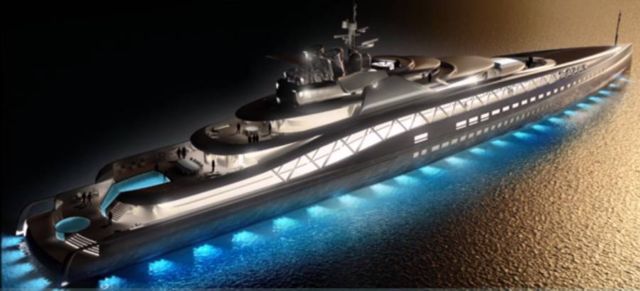
The yacht features 7 decks, including a sun deck, a high visibility bridge and operational deck, a dedicated owner’s deck, a social and entertaining deck which enjoys the use of open yet protected terraces both forward and aft, a guest deck with further terracing and an art gallery with views into the amazing machine room, plus a purposeful crew deck with excellent amenity and crew social spaces and a utility deck which provides handsome accommodation for the galley, laundry, stores, etc. all linked with segregated circulation routes to ensure that the crew can carry on their duties throughout the yacht discreetly and efficiently.
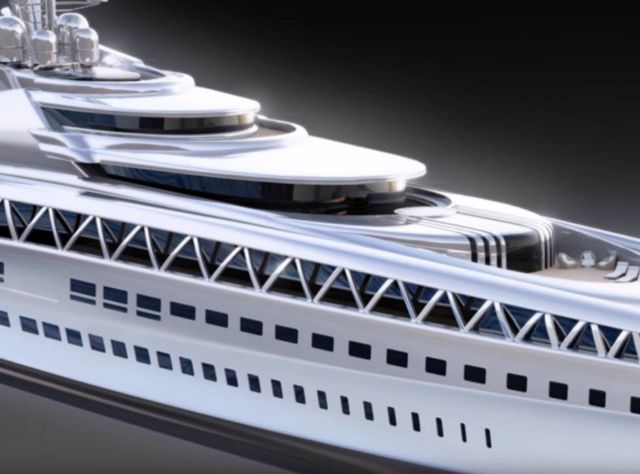
source Fincantieri
Related Posts

NEOM has ordered a fleet of Candela’s P-12 electric Hydrofoil Shuttles

Viewpoint sightseeing ship

Ships of the Future
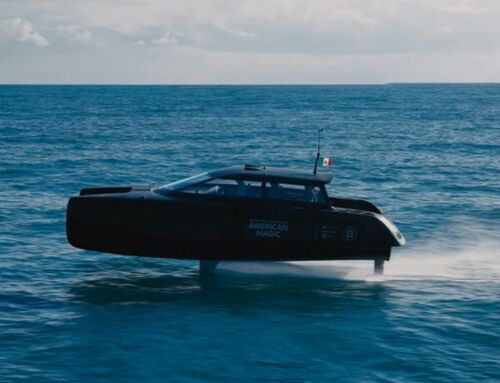
Hydrogen-Powered Hydrofoil will support Racers in the America’s Cup
Leave a comment cancel reply.
Fincantieri Yachts 145m Fortissimo superyacht by Ken Freivokh Design
- Inspiration
Related News
Popular news this week, popular news this month, latest news.
- Yacht Charter & Superyacht News >
Written by Chelsea Smith
This image is featured as part of the article Fincantieri Yachts’ 145m Fortissimo superyacht by Ken Freivokh Design .
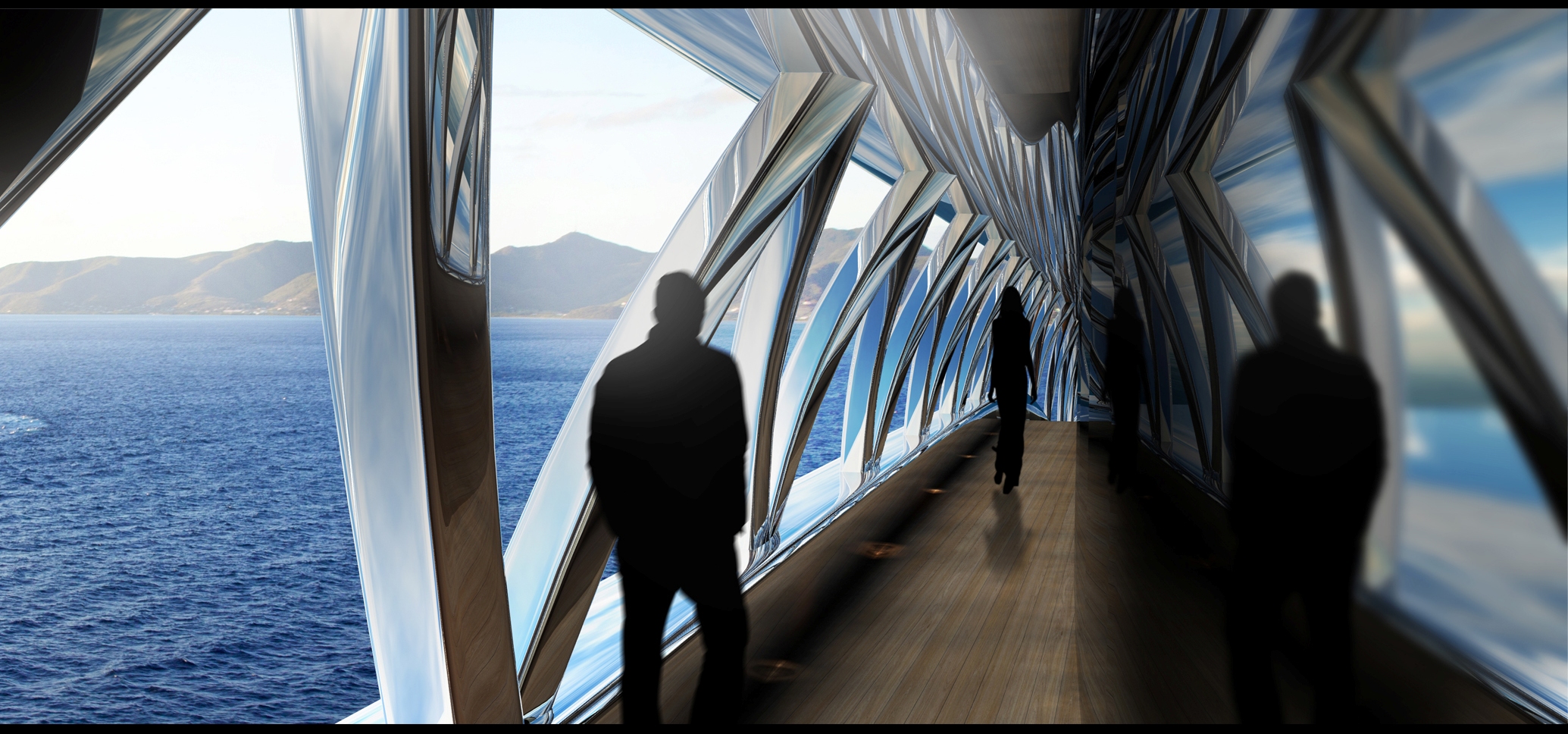
Please contact CharterWorld - the luxury yacht charter specialist - for more on superyacht news item "Fincantieri Yachts 145m Fortissimo superyacht by Ken Freivokh Design ".
- Charity & Fund Raising
- CharterWorld News
- Classic Yachts
- Coronavirus
- Cruise Ship
- Ecological Yachts
- Expedition Yachts
- Expert Broker Advice
- Feature Superyachts
- Interior Design
- Legal & VAT Yacht Issues
- Luxury Catamarans
- Luxury Gulet
- Luxury Phinisi
- Luxury Trimarans
- Luxury Yacht Design
- Luxury Yachts
- Marinas & Harbours
- Marine Ecology
- Marine Electronics
- Marine Equipment
- Mega Yachts
- Modern Yachts
- Motor Yachts
- New Launch Yachts
- New To Charter
- Open Style Sports Yachts
- Private Jets
- Sailing Yachts
- Social Media
- Sports Yachts
- Superyacht Crew
- Superyacht Photographers
- Superyacht Products & Supplies
- Superyacht Refits
- Superyacht Reviews
- Superyachts
- Uncategorized
- Yacht Builders
- Yacht Charter
- Yacht Charter Destinations
- Yacht Charter Picks
- Yacht Charter Specials
- Yacht Delivered to Owner
- Yacht Designers
- Yacht Events & Boat Shows
- Yacht Fashion
- Yacht Industry News
- Yacht Photos
- Yacht Racing
- Yacht Racing & Regattas
- Yacht Safety Equipment
- Yacht Support Vessels
- Yacht Tenders
- Yacht Videos
- Yachting Associations
- Yachting Awards
- Yachting Business
- Yachts For Charter
- Yachts For Sale
Quick Enquiry
Superyacht news:.
Email Your Yachting News to: news @ charterworld.com
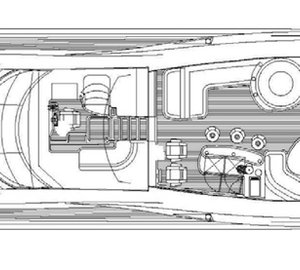
Ken Freivokh-designed 145m mega yacht FORTISSIMO concept nominated for IY&A Award 2014

Breath-taking 145m Mega Yacht FORTISSIMO concept FOR SALE
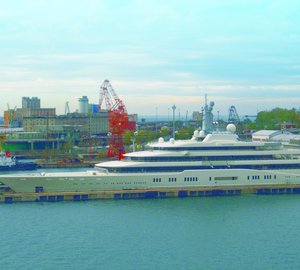
Fincantieri Trieste Shipyard completes drydock on luxury yacht ECLIPSE
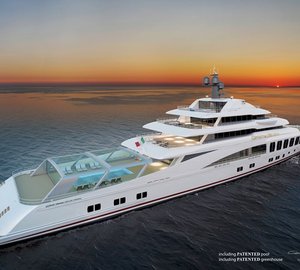
Fincantieri Yachts to be present at London Yacht, Jet and Prestige Car Show 2015

Latest Amels superyacht AMELS 6006 completes her first sea trials
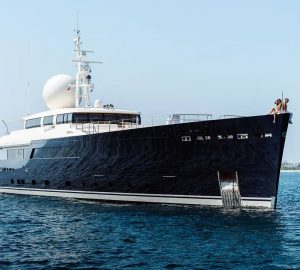
Motor yacht GALILEO in the Maldives until October 9th offering 10% off remaining weeks
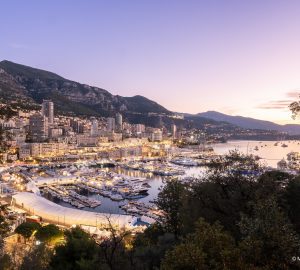
2024 MONACO YACHT SHOW: Only two weeks to go before the superyachts dock at Port Hercule
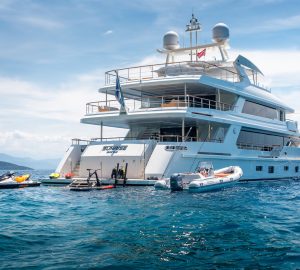
Charter special offer on board 43m luxury yacht SUNRISE

Yacht Charter Etiquette: Essential advise for a seamless travel experience

Luxury motor yacht SIDURI III for charter in the Western Mediterranean

10 sensational superyachts with spectacular swimming pools
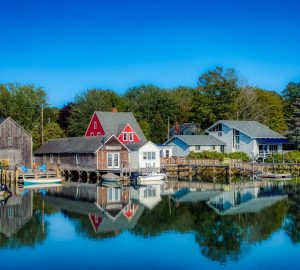
A luxury charter yacht is the perfect way to encounter New England’s fall foliage display
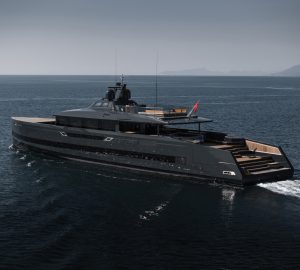
45m custom superyacht SAN will debut at the 2024 Monaco Yacht Show

31m luxury yacht CARPE DIEM available for charter in the Bahamas
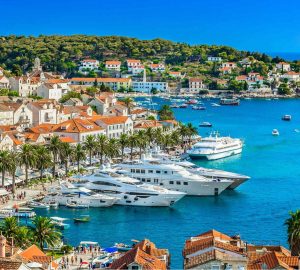
Inaugural CROYA Charter Show announced for 4th to 6th October 2024 in Split, Croatia
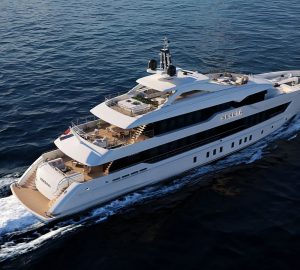
55m superyacht YN20555 is launched by Heesen Yachts and named superyacht SERENA
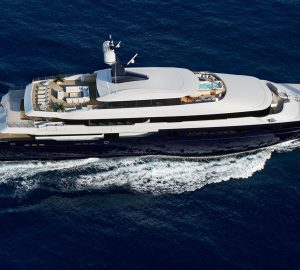
Late summer special offer on board 72m superyacht ARBEMA in the Western Mediterranean
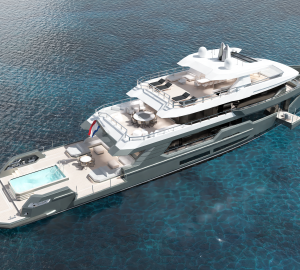
Leapher Yachts unveils 49m luxury explorer yacht NAVIX50

Fincantieri 145m Fortissimo superyacht | WordlessTech

The new horizon
Claydon reeves, exterior design, march & white, interior design, a flow from bow to stern, with a taught, meaningful snap.

THE INSTINCTIVE ELEGANCE OF ITALIAN FASHION

${items/video_title}
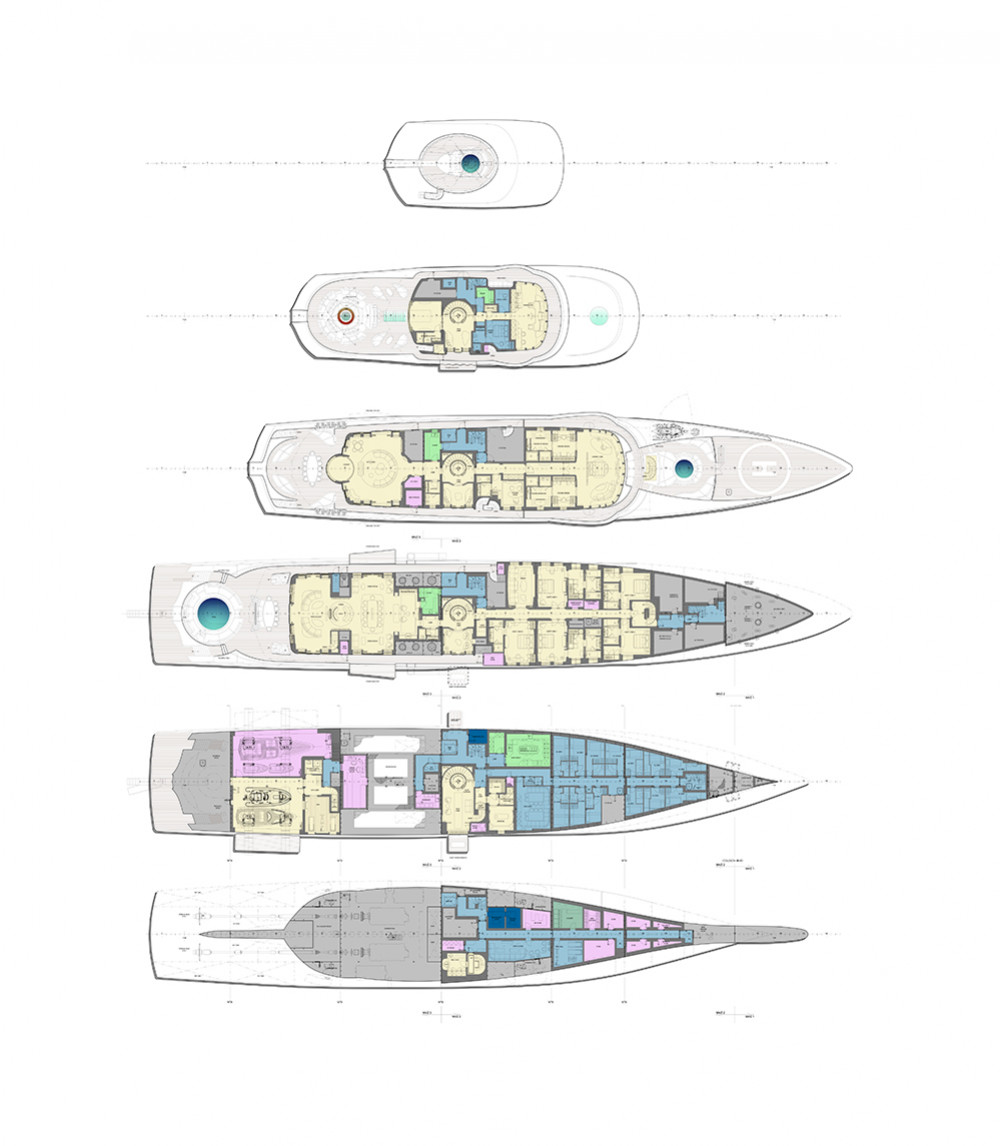
| Length overall | 91.85 m |
| Max beam | 14.0 m |
| Full load draught | 4.0 m |
| Gross tonnage | 2,550 GRT |
| No. of decks | 6 |
| Owner and guests cabins | 6 |
| Owner and guests capacity | 12 |
| Crew and staff cabins | 14 |
| Crew and staff capacity | 25 |
| Propulsion system | 2 diesel engines driving fixed pitch propellers |
| Propulsion engine power | 2 x abt. 2,350 kW |
| Maximum speed (100% power) | abt. 18.0 kn |
| Nautical range at 12 kn | abt. 5500 nm |
| Generators | 2 x abt. 400 ekW + 1 x 350 ekW |
| Bow thruster (super silent type) | 1 x abt. 300 kW |
| Stern thruster (super silent type) | 1 x abt. 150 kW |
| Stabilizers | 2 pairs fixed– at anchor stabilization |
| Max tender length | 10.0 m |
Next Product
75m luxury motor yacht, discover all of our yachts. majestic and inimitable italian operas:, hull 6218 - ocean victory, hull 6154 - serene, griffin series, ottantacinque, fc swath 75.

IMAGES
VIDEO
COMMENTS
145m gas turbine yacht. The perfect fusion of power and elegance. KEN FREIVOKH. Designer. For an innovative design team, few opportunities are as compelling as an invitation to design an amazing and very large turbine powered luxury super yacht.
Fincantieri Yachts 145m Fortissimo superyacht by Ken Freivokh Design. The modern Fortissimo 135 motor yacht features 8 guests' staterooms able to accommodate up to 16 owners or yacht charter guests. There will also be accommodation for up to 48 crew members.
FORTISSIMO - 145m GAS TURBINE YACHT - designed by KEN FREIVOKH specially for FINCANTIERI YACHTS. FINCANTIERI YACHTS TECHNOLOGY OF BEAUTY. g quality. It's the final result of a special synergy of advanced technical, design and construction capabilities, perfected over more than two centuries of experience building all types of oceangoi.
Our yachts are designed in our dedicated Yacht Design Centre in Muggiano with our Fincantieri Centres of Excellence and are the outcome of a blending of experience and technology, nurtured during the years in the construction of both naval vessels and merchant ships.
Superbly penned by bespoke Ken Freivokh, the breath-taking 145-metre mega yacht FORTISSIMO concept is currently available for sale. Representing one of the fastest superyachts in the world, capable of over 35 knots, luxury motor yacht FORTISSIMO concept is a high performance gas turbine vessel, based on a platform developed by ...
That's exactly what Ken Freivokh Design and Fincantieri Yachts accomplished when they collaborated on the Fortissimo superyacht concept which measures an impressive 145 meters and is capable achieving speeds of over 35 knots.
Yacht Charter & Superyacht News > 145m Fincantieri superyacht Fortissimo concept designed by Ken Freivokh . 145m Fincantieri superyacht Fortissimo concept designed by Ken Freivokh. February 10, 2014. Written by Zuzana Bednarova. This image is featured as part of the article Ken Freivokh-designed 145m mega yacht FORTISSIMO concept nominated for IY&A Award 2014. 145m Fincantieri superyacht ...
View the full specifications for the Fortissimo superyacht concept. Sign up to our newsletter Read indepth magazine Find anything, super fast. ... Fastfind $ € m ft Open search. For sale Yacht Search For charter Charter Search New Build Yacht Concepts ...
During the Monaco Yacht Show, Fincantieri Yachts unveiled two exciting new design projects, the Virage 88 and the Fortissimo. The Virage 88 concept has been developed to underline Fincantieri Yachts' interest in building top quality custom yachts in the 70 to 90 metre range.
Ken Freivokh Design has been selected as one of the finalists for the International Yacht & Aviation Awards 2014 with the 145m mega yacht Fortissimo concept, entering the 'Yacht Concept Design over 30 metres' category. Representing one of the fastest superyachts in the world, yacht Fortissimo concept design is a…
The largest super yacht builder in Italy, Fincantieri, selected Ken Freivokh Design to partner them in the development of an amazing 145m turbine powered super yacht.
New 88m and 145m superyacht designs from Fincantieri. By Adrian Prisca. |. Updated on September 1, 2017. Built to highlight Fincantieri Yachts' object of building extravagant 70-90 meter long vessels, the Virage 88 concept was presented at the recent Monaco Yacht Show.
"Fortissimo" is a super yacht designed with total flexibility in mind. Essential parts of the superstructure rely on a tremendously rigid spaceframe system which allows large
New designs have been surfacing from Fincantieri and collaborating design firms. One of the new designs is a 145-meter long project called "Fortissimo". The collaboration with the Fortissimo project is between Fincantieri and Ken Freivokh Design. The vessel in synopsis is very sleek and slender yet powerful looking.
Fortissimo 145m superyacht from Fincantieri, the largest yacht builder in Italy. Fincantieri, selected Ken Freivokh Design to partner them in the development of an amazing 145m turbine powered Fortissimo superyacht.
This image is featured as part of the article Fincantieri Yachts' 145m Fortissimo superyacht by Ken Freivokh Design.
Le Fincantieri Fortissimo Superyacht by Ken Freivokh Design est un concept hors norme. Long de 145 mètres et lourd de 7 000 tonnes, le projet italien propose 8 suites et peut embarquer un...
Nov 3, 2017 - Fortissimo 145m superyacht from Fincantieri, the largest yacht builder in Italy.
Fincantieri Yachts has a particular specialism in high-quality superyachts over 70 metres long, and there is no limit to the size or volume of yachts we can produce.
This image is featured as part of the article Fincantieri Yachts' 145m Fortissimo superyacht by Ken Freivokh Design. Fincantieri Yachts 145m Fortissimo superyacht by Ken Freivokh Design Please contact CharterWorld - the luxury yacht charter specialist - for more on superyacht news item "Fincantieri Yachts 145m Fortissimo superyacht by Ken Freivokh Design ".
Oct 5, 2022 - Fortissimo 145m superyacht from Fincantieri, the largest yacht builder in Italy.
Linea is a collaboration between Fincantieri and Claydon Reeves that developed from a conversation at the Monaco Yacht Show. The Project demonstrates how the collaboration of a design studio and shipyard can produce a superyacht of functional and aesthetic beauty.